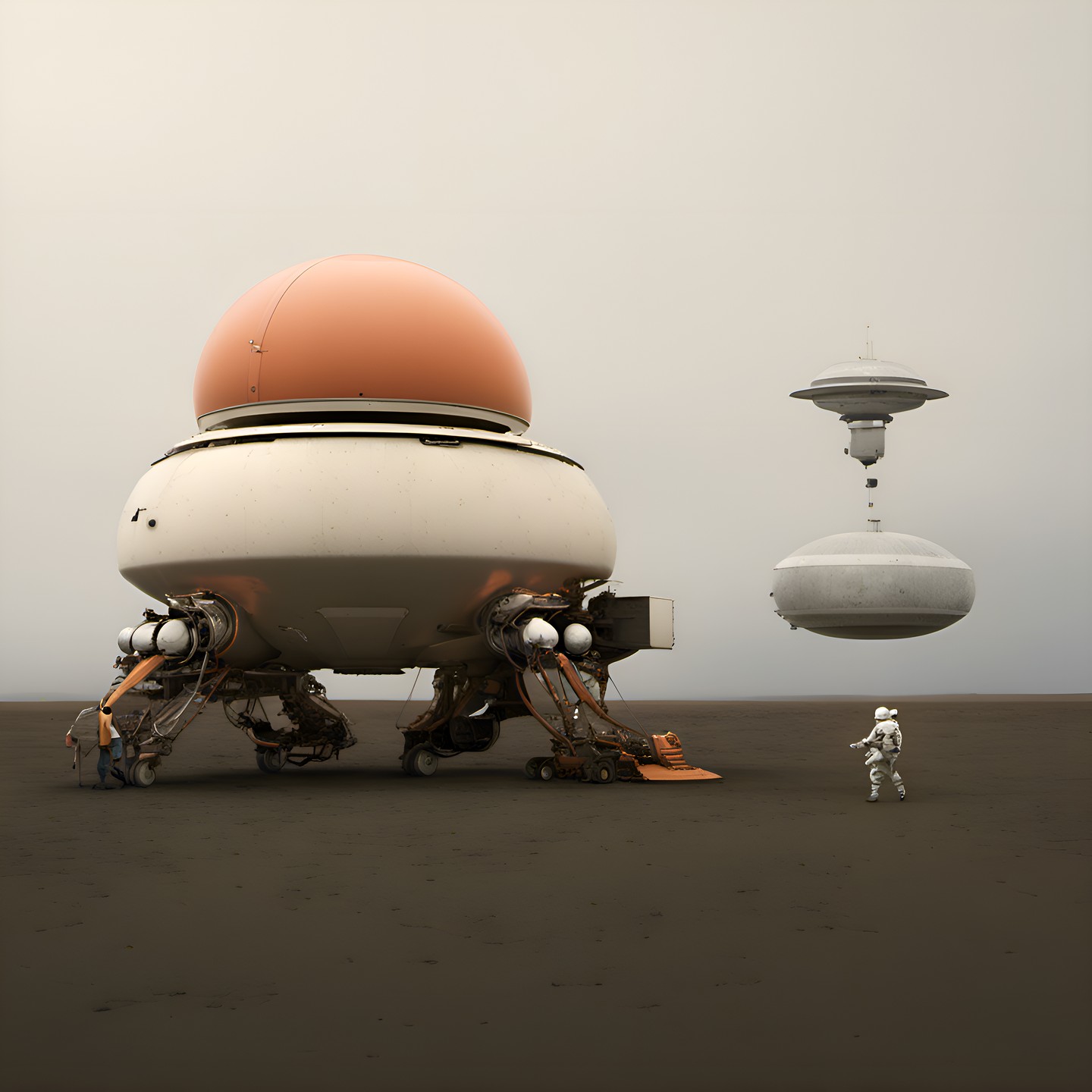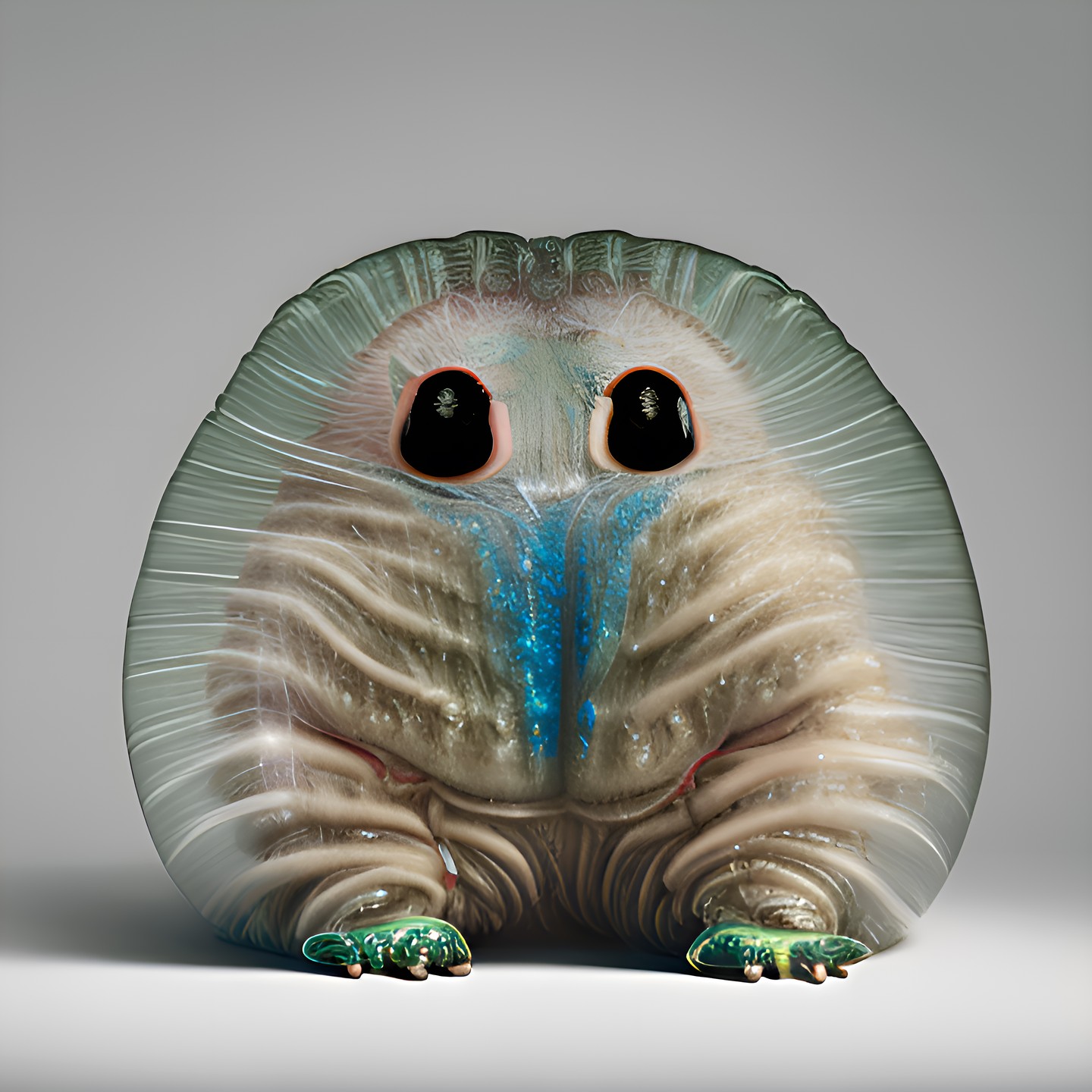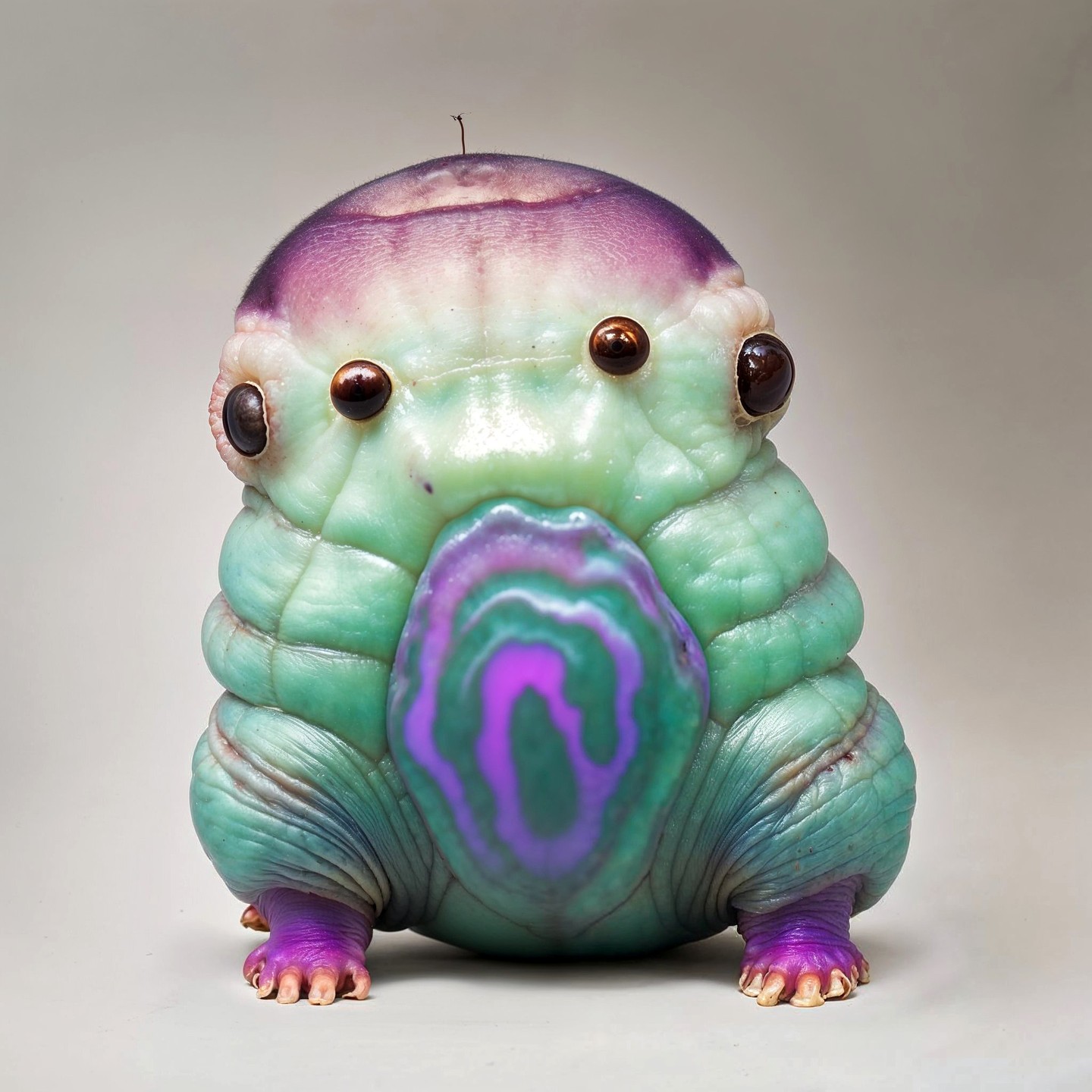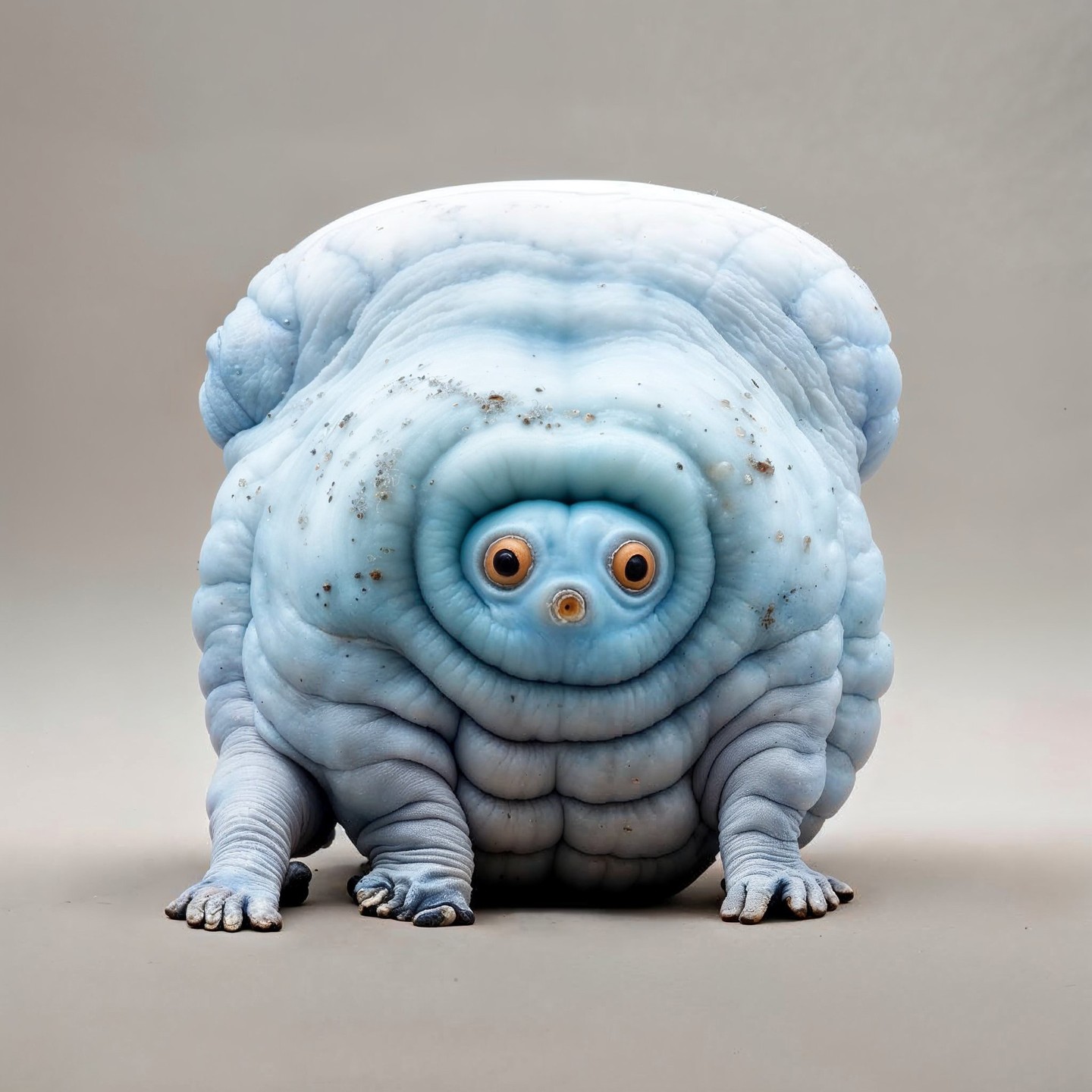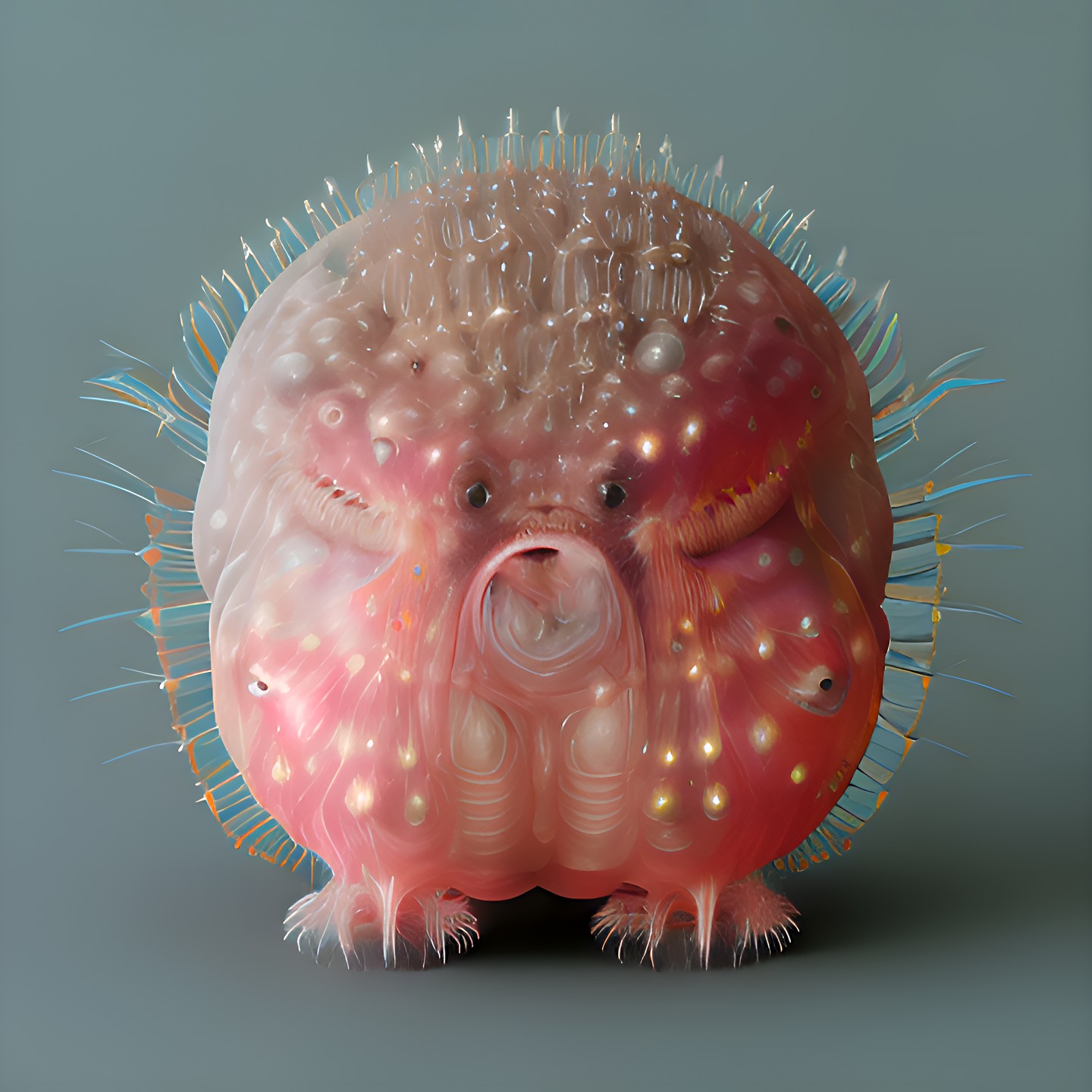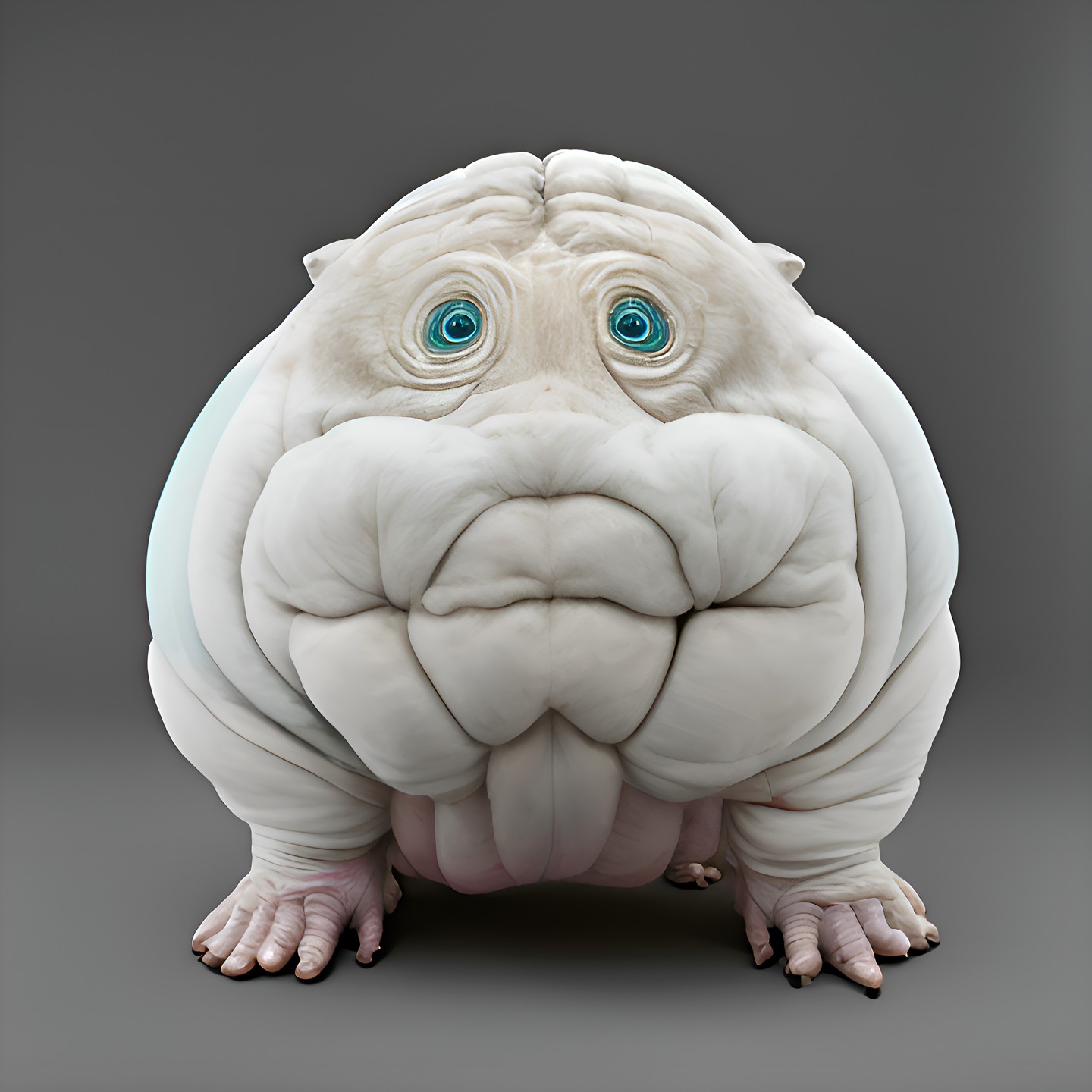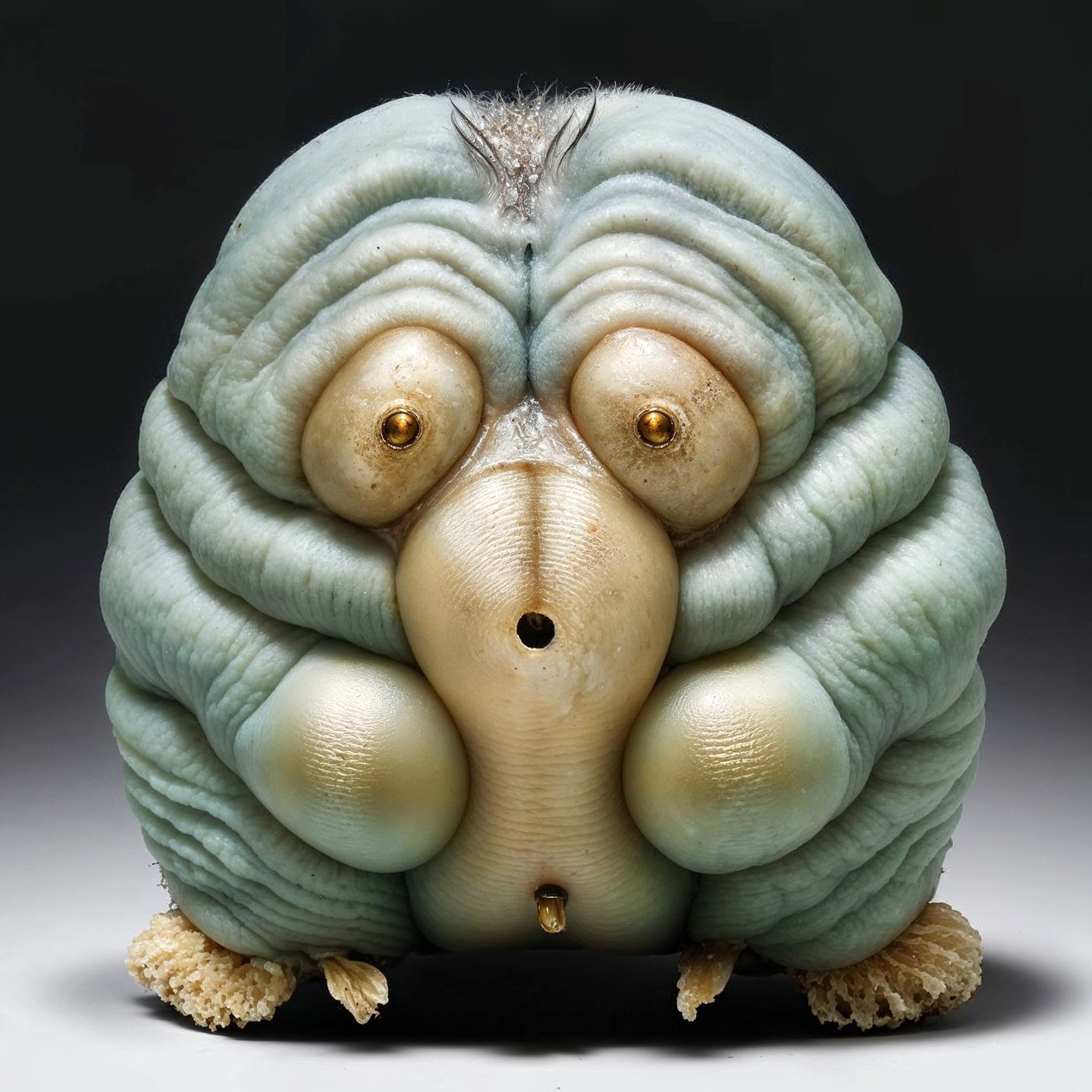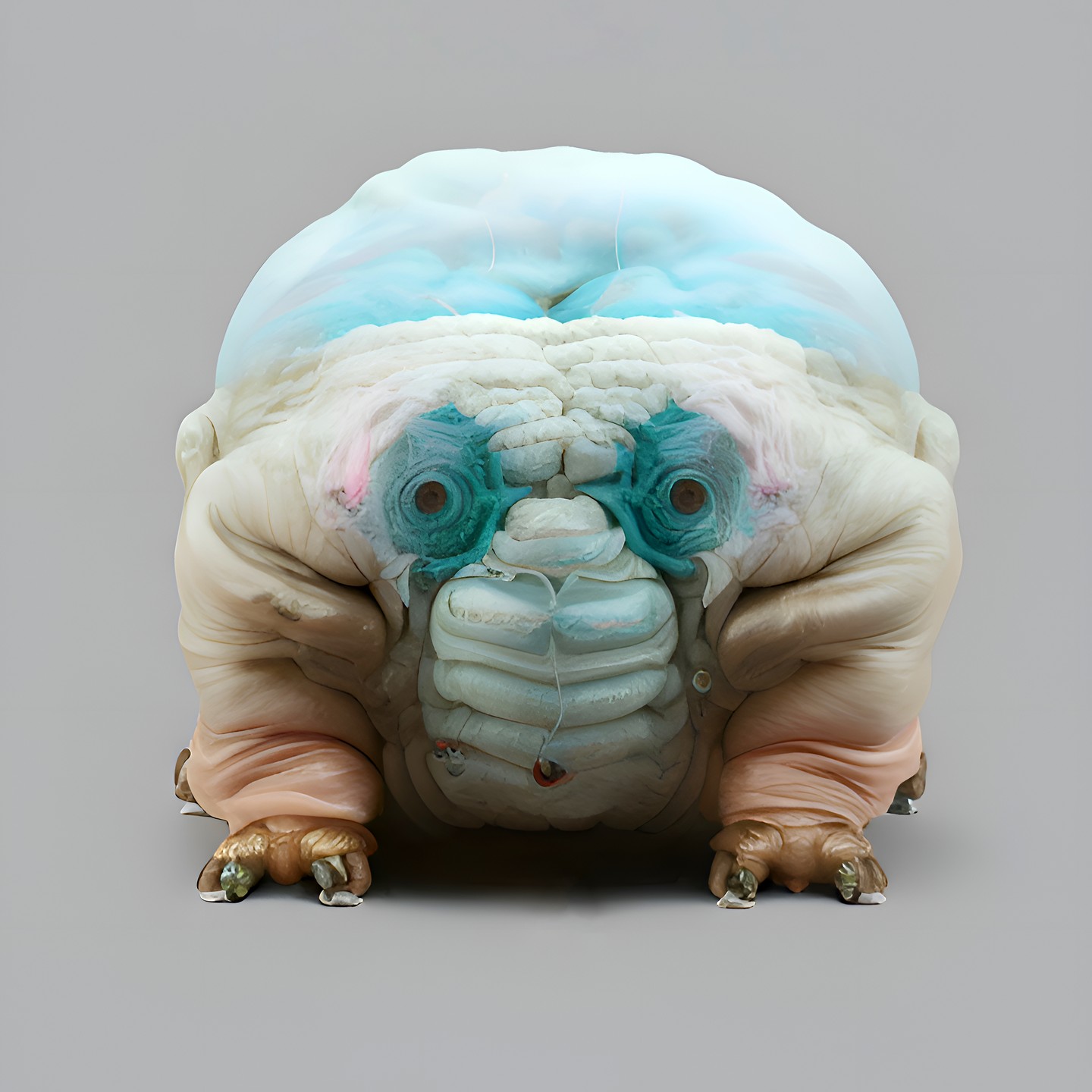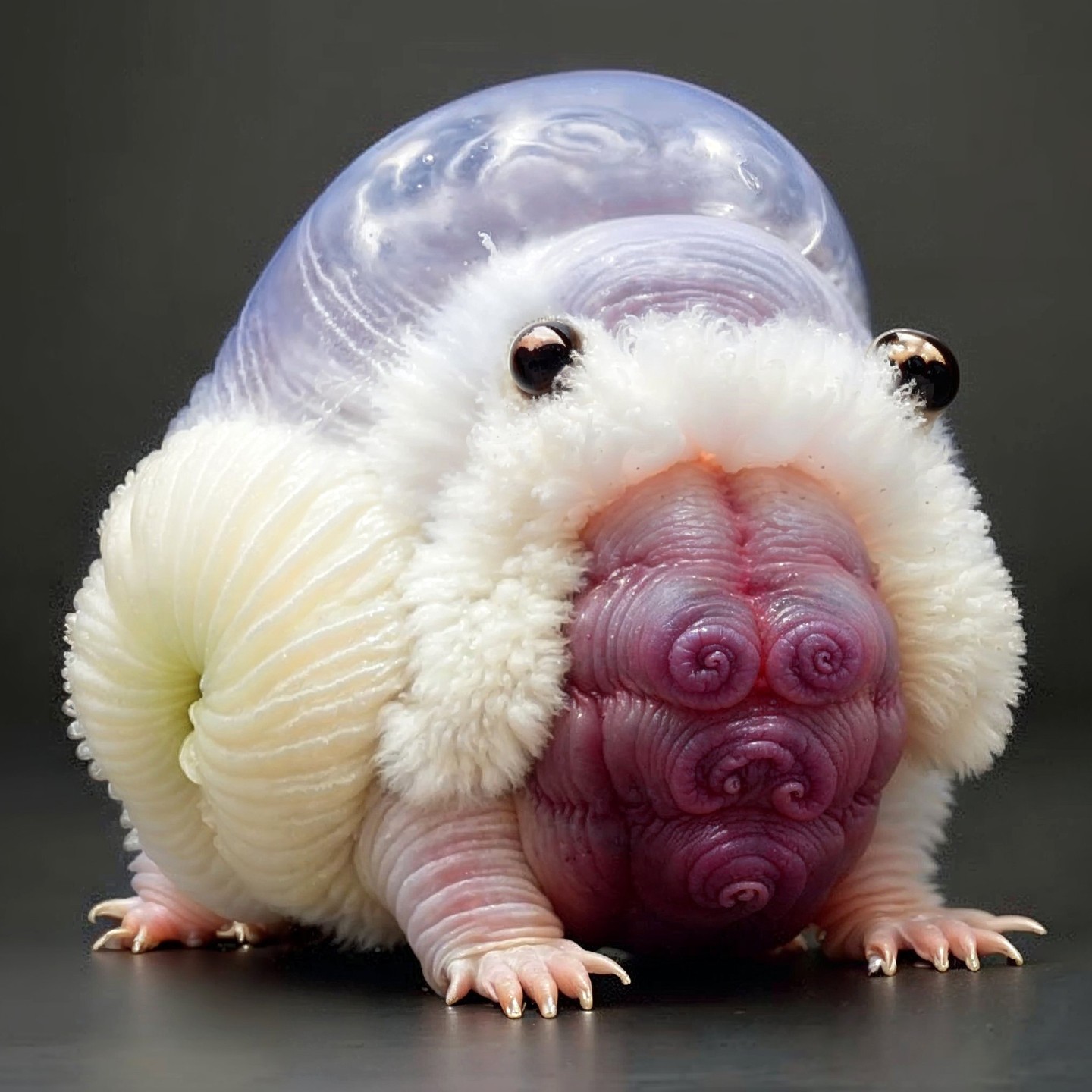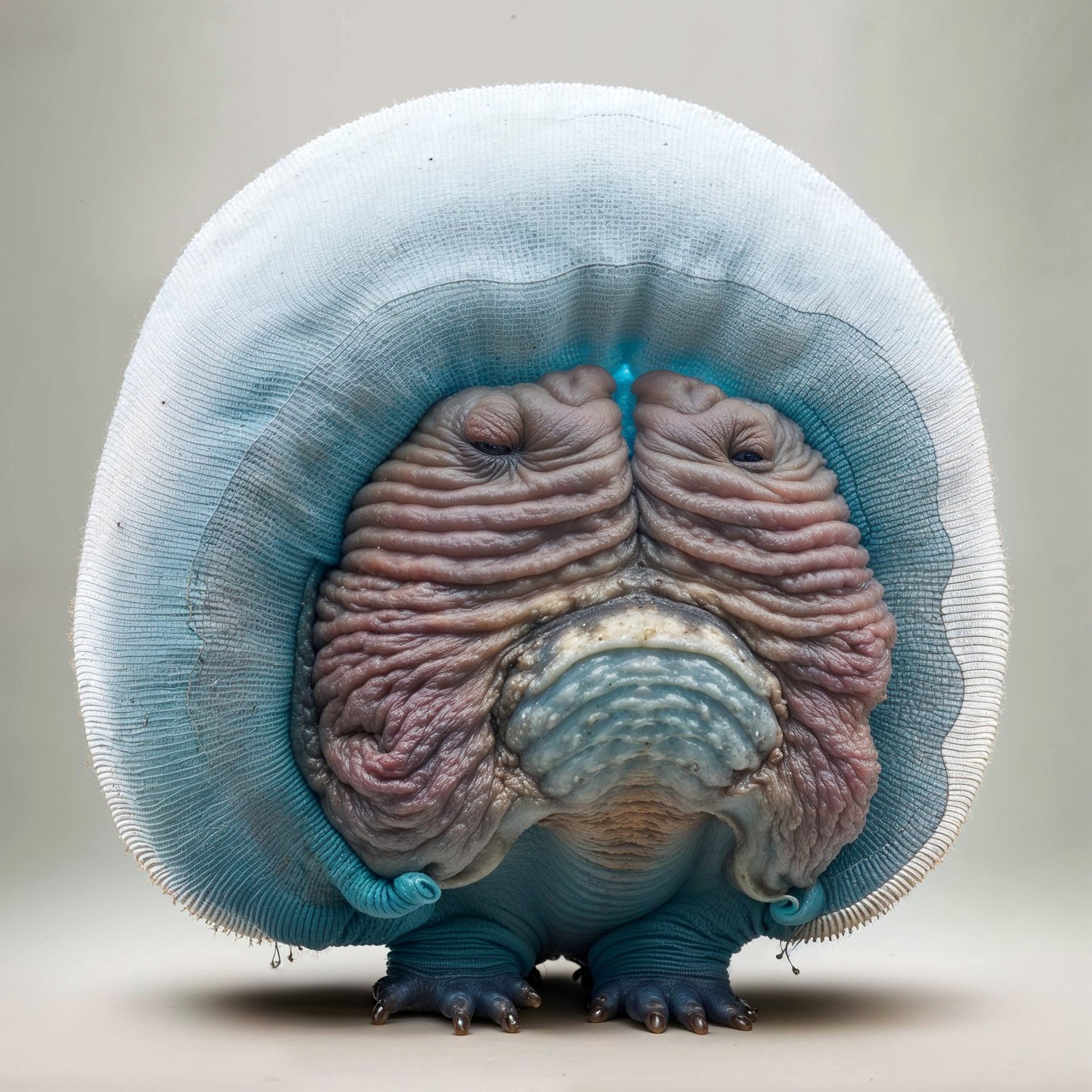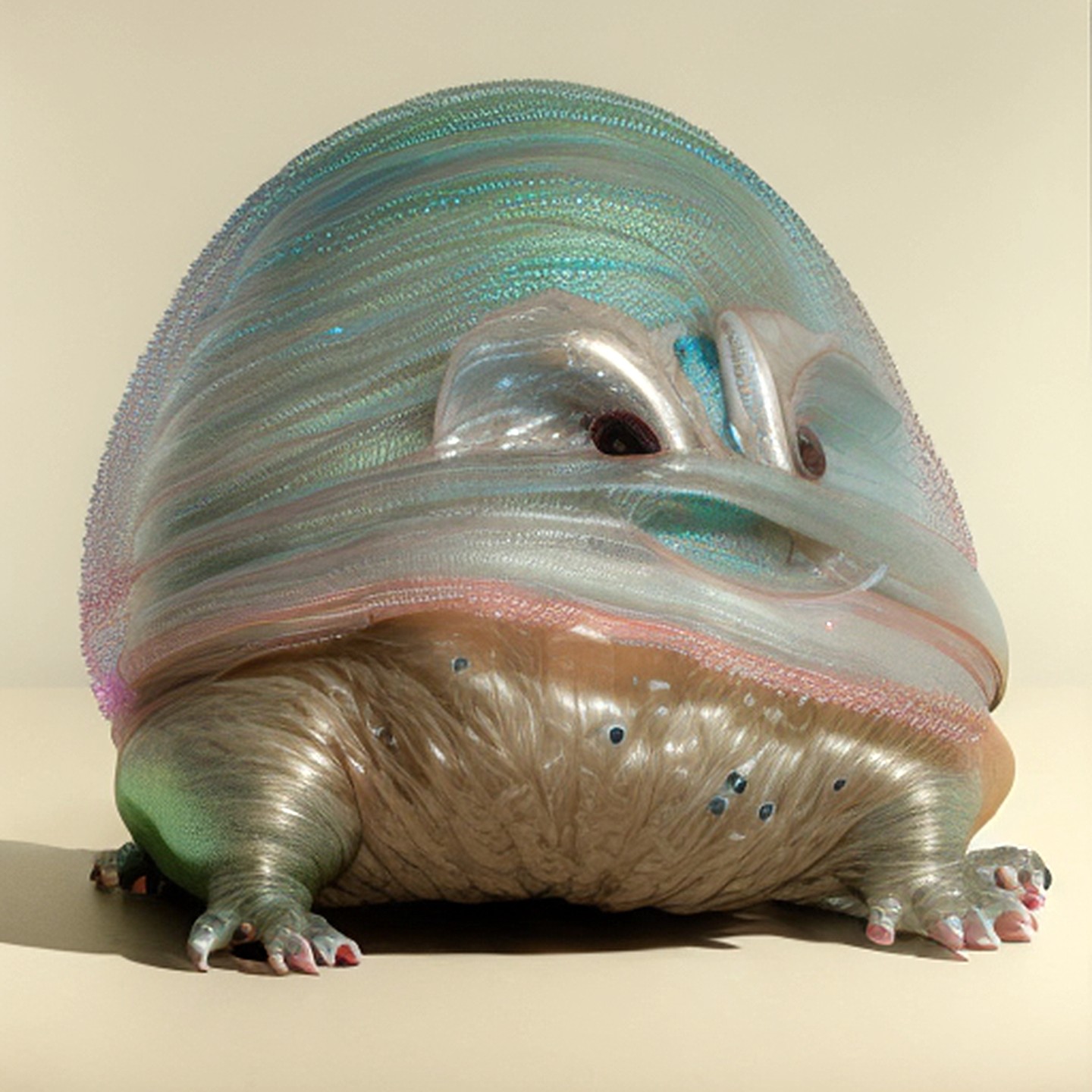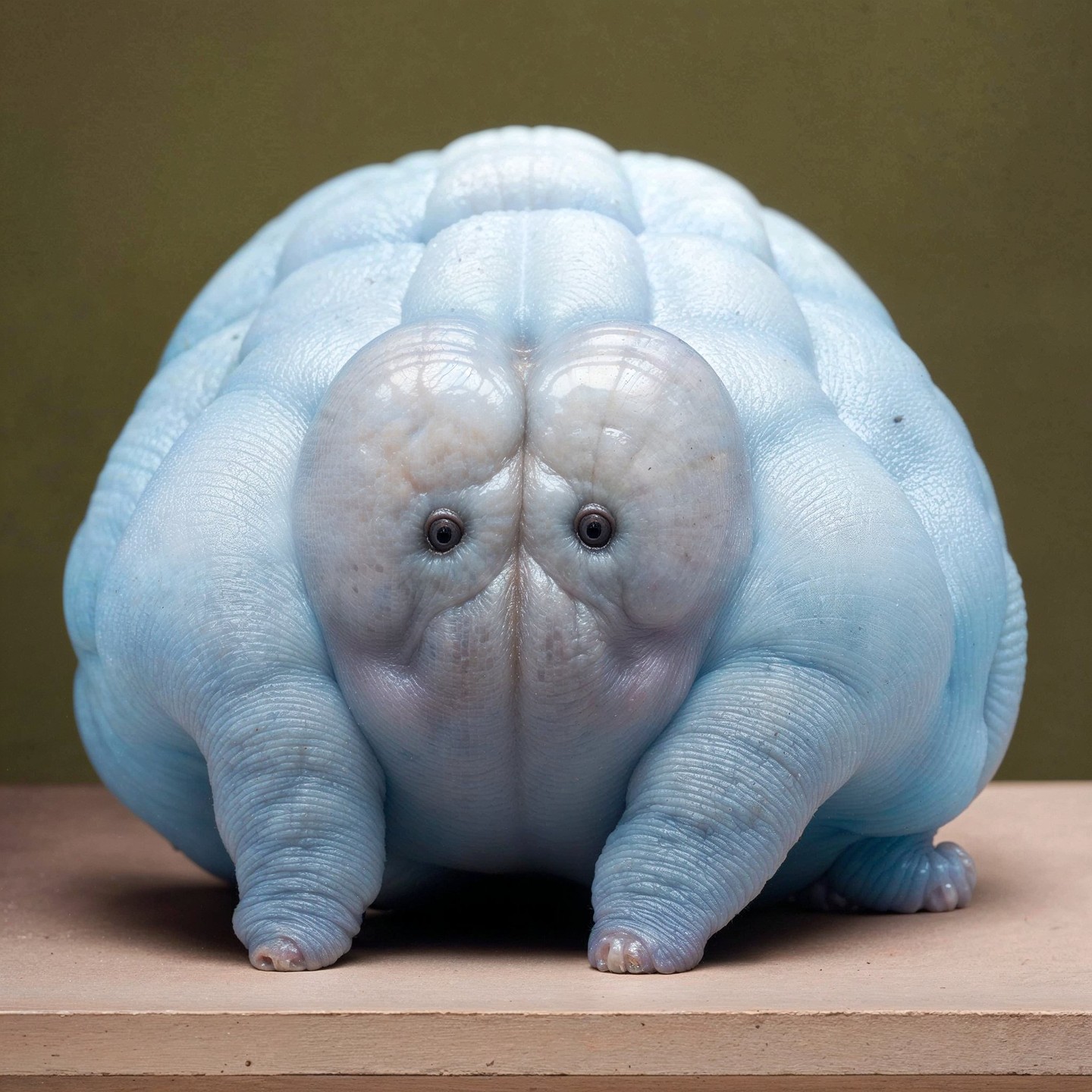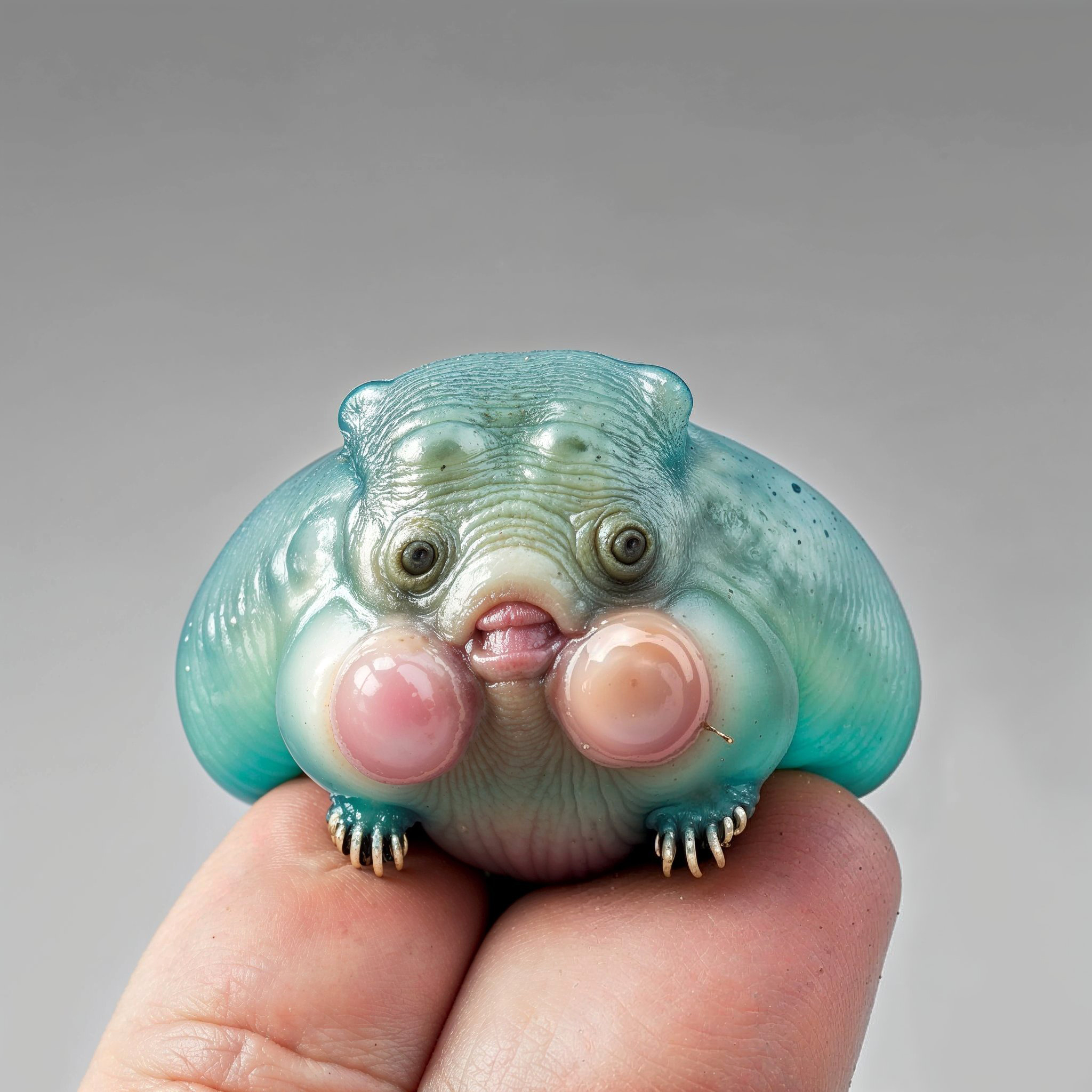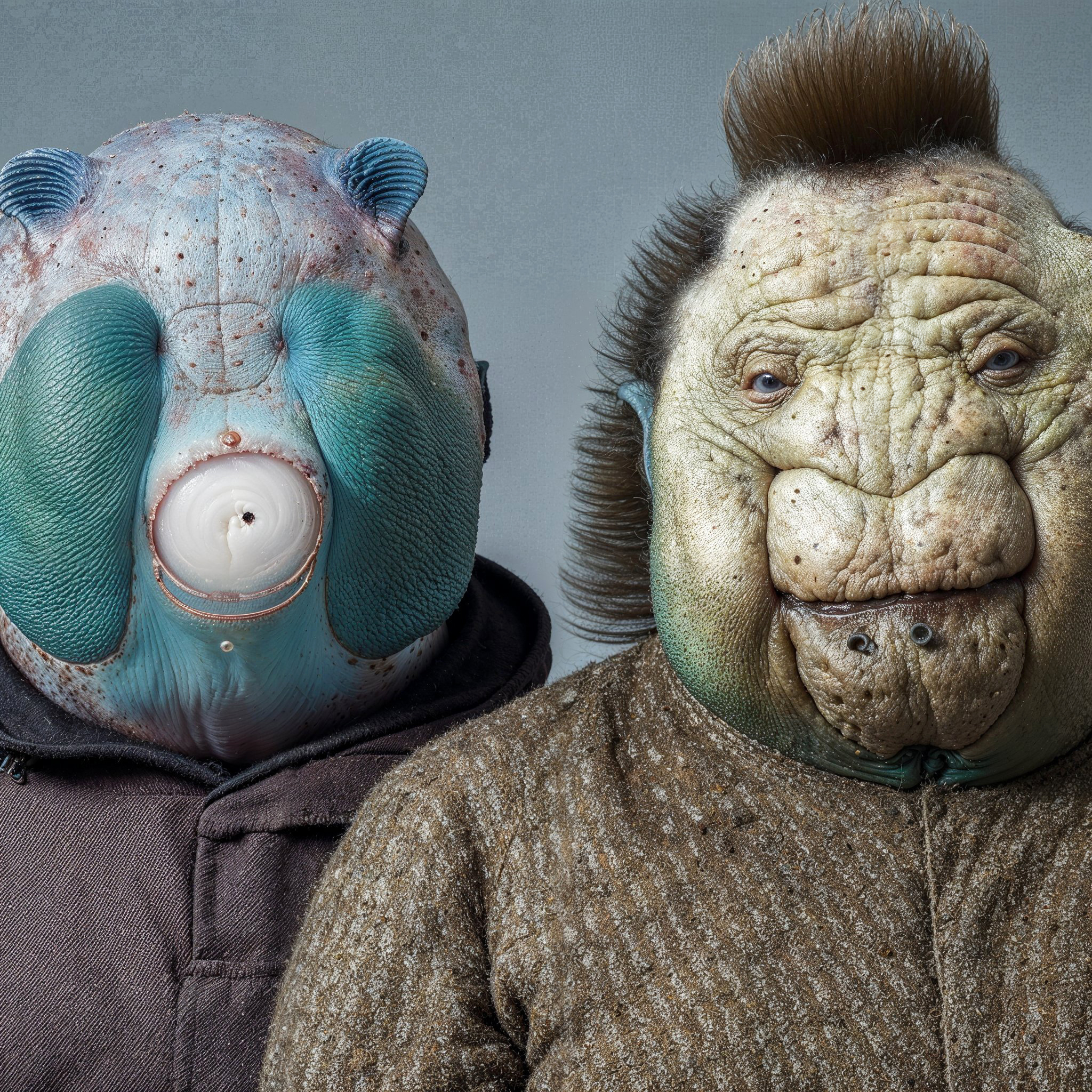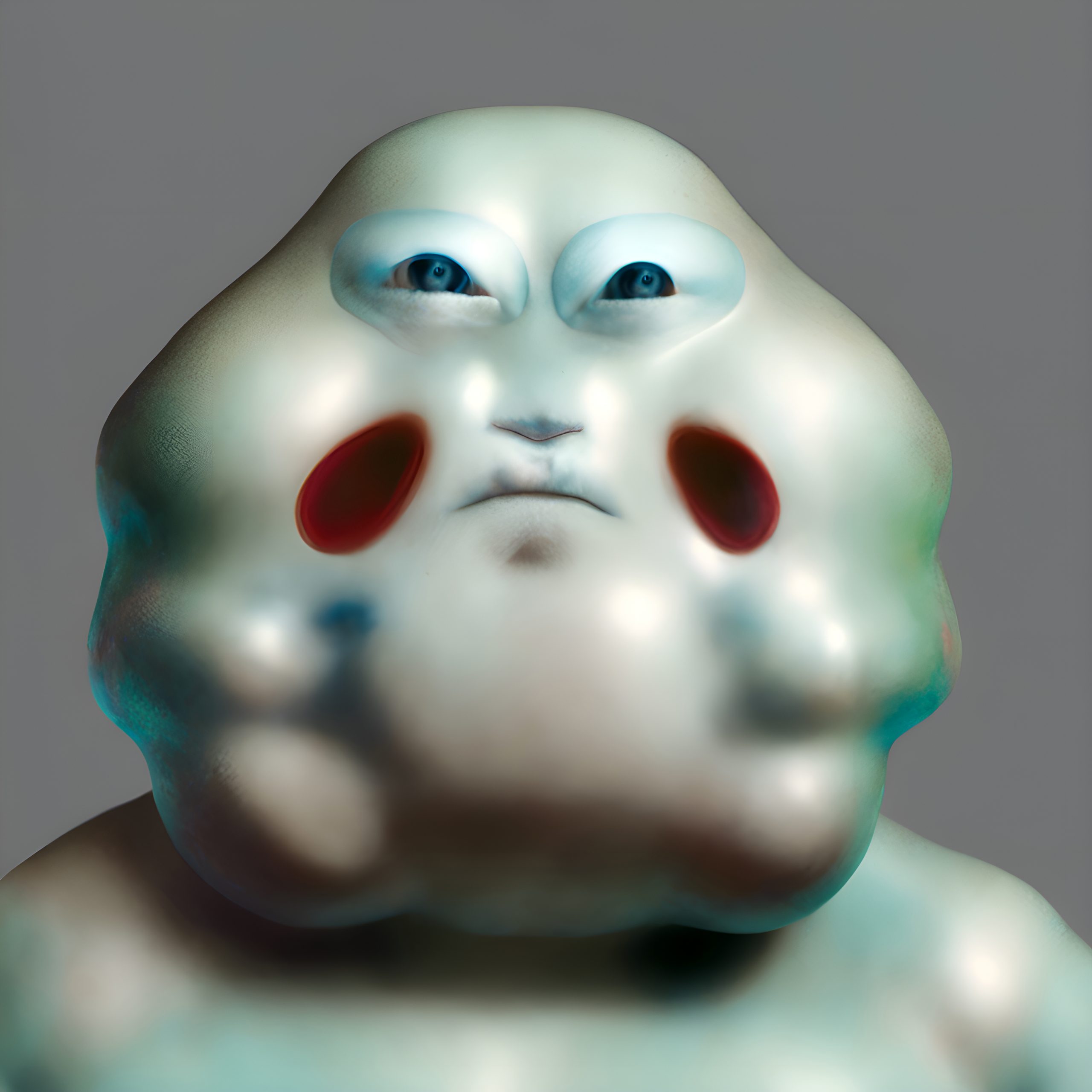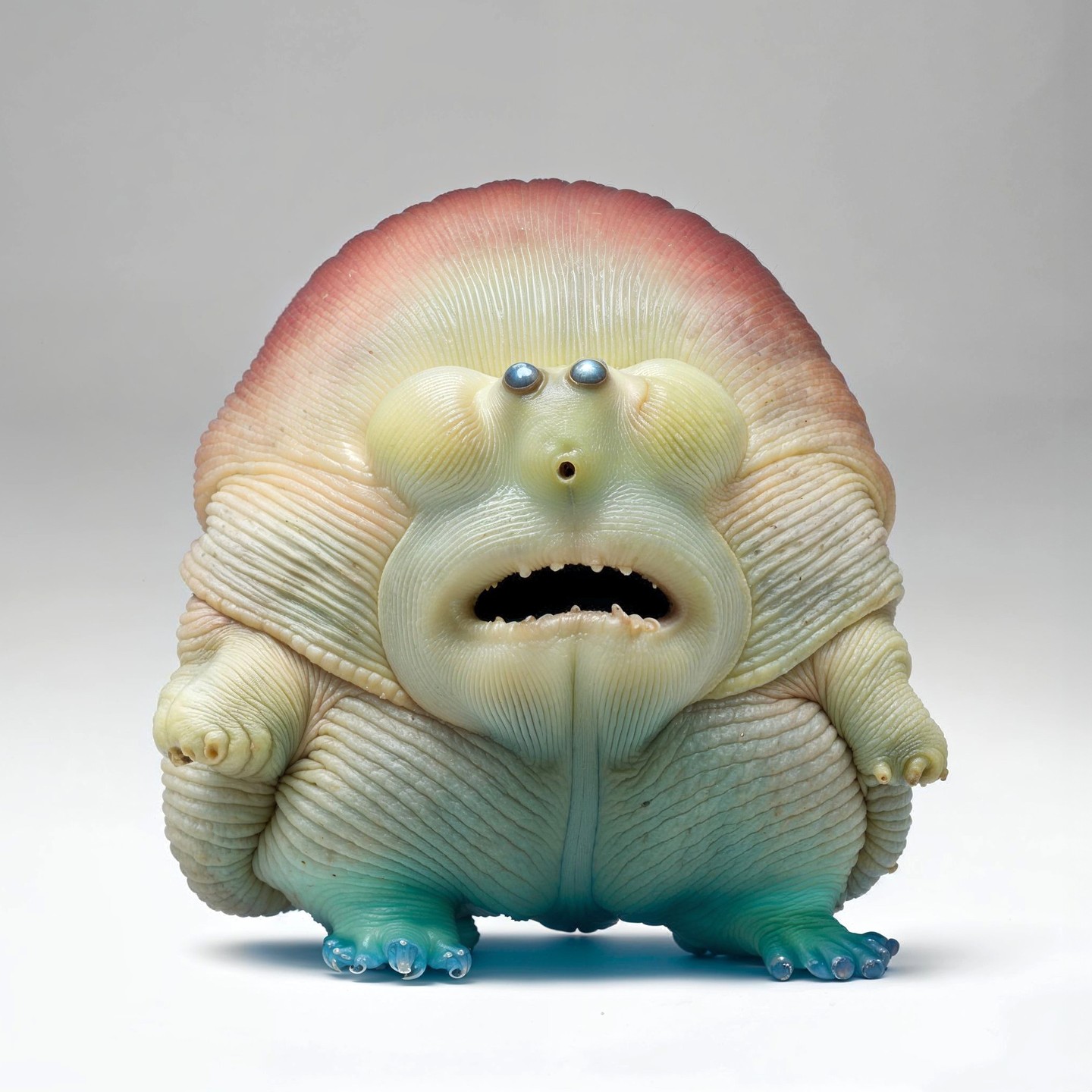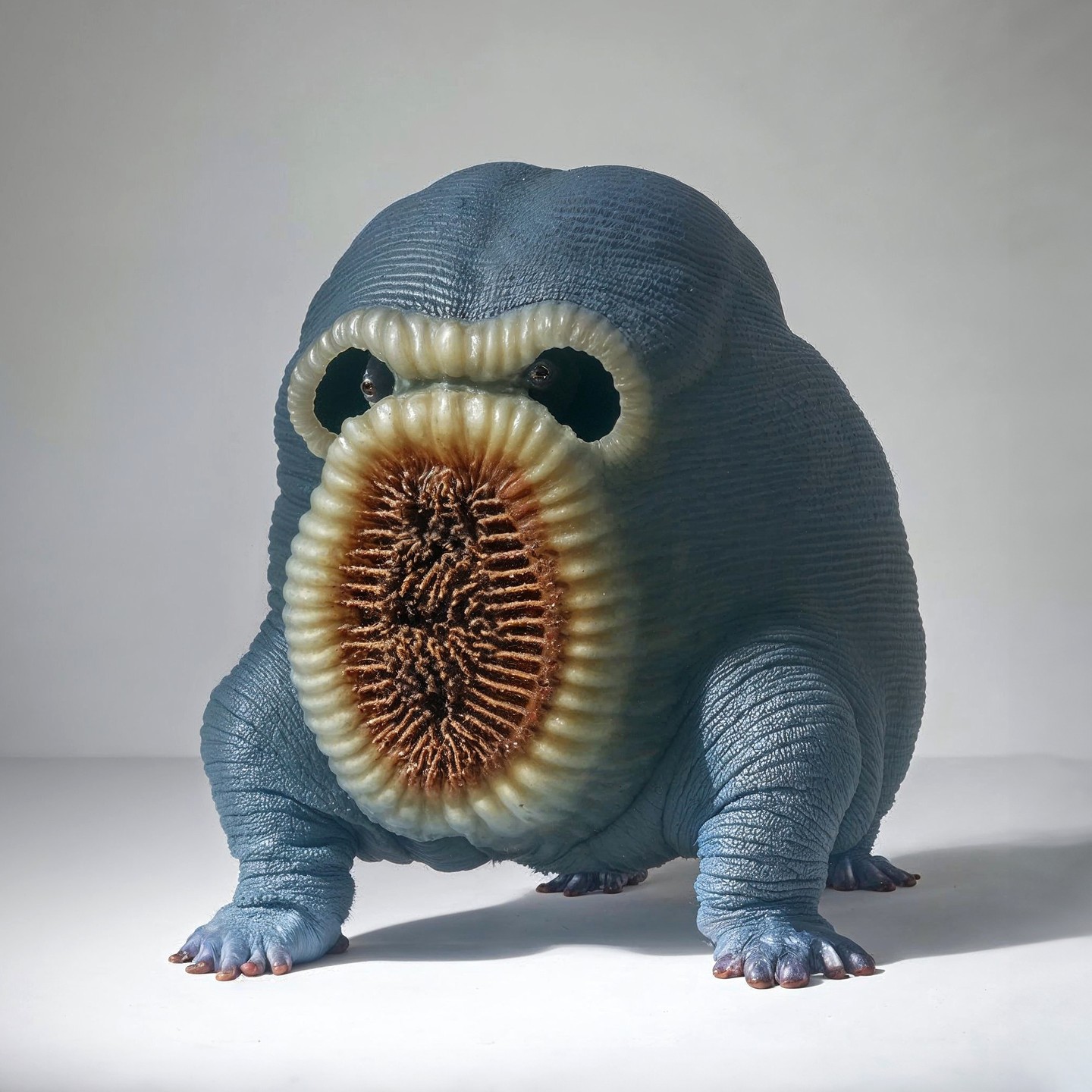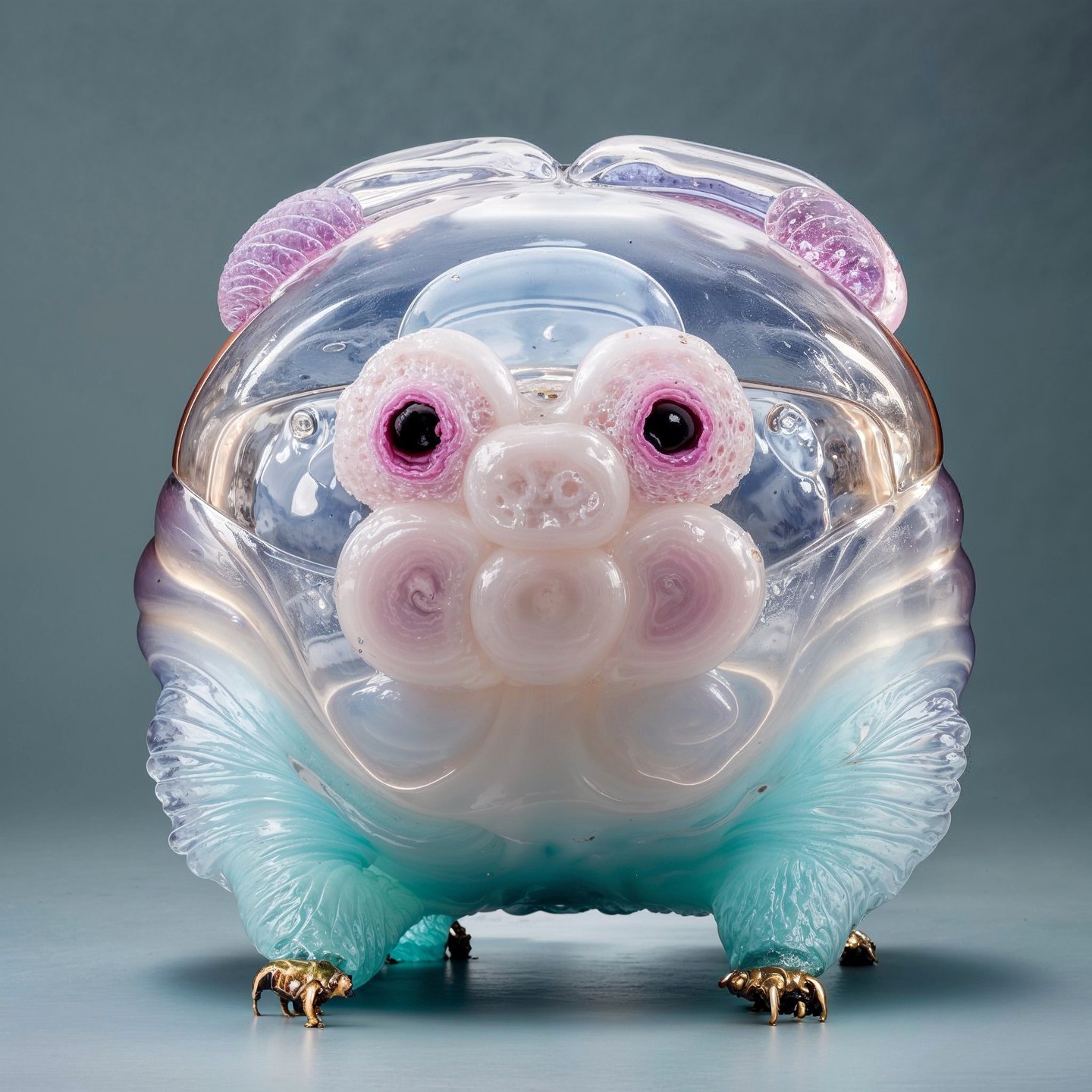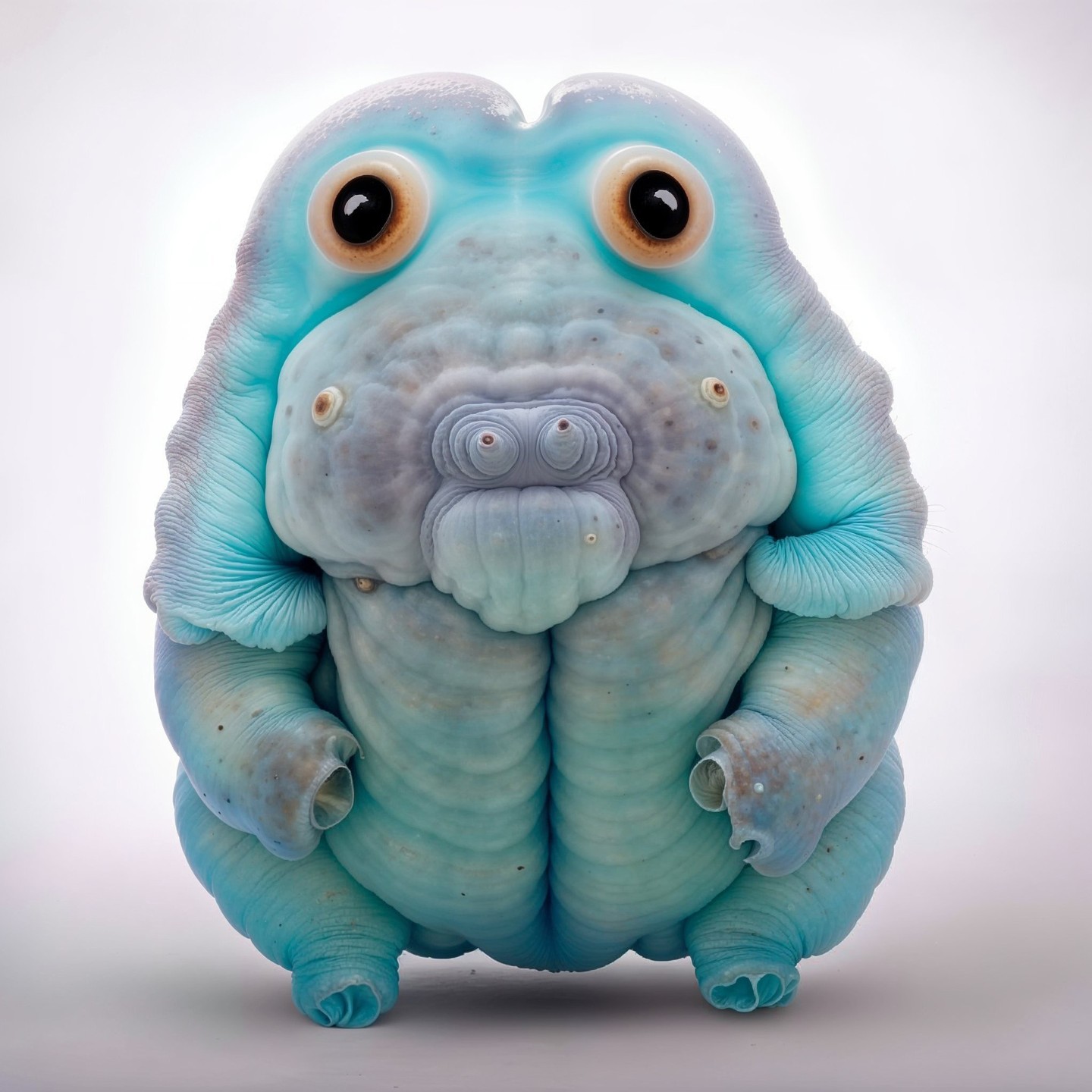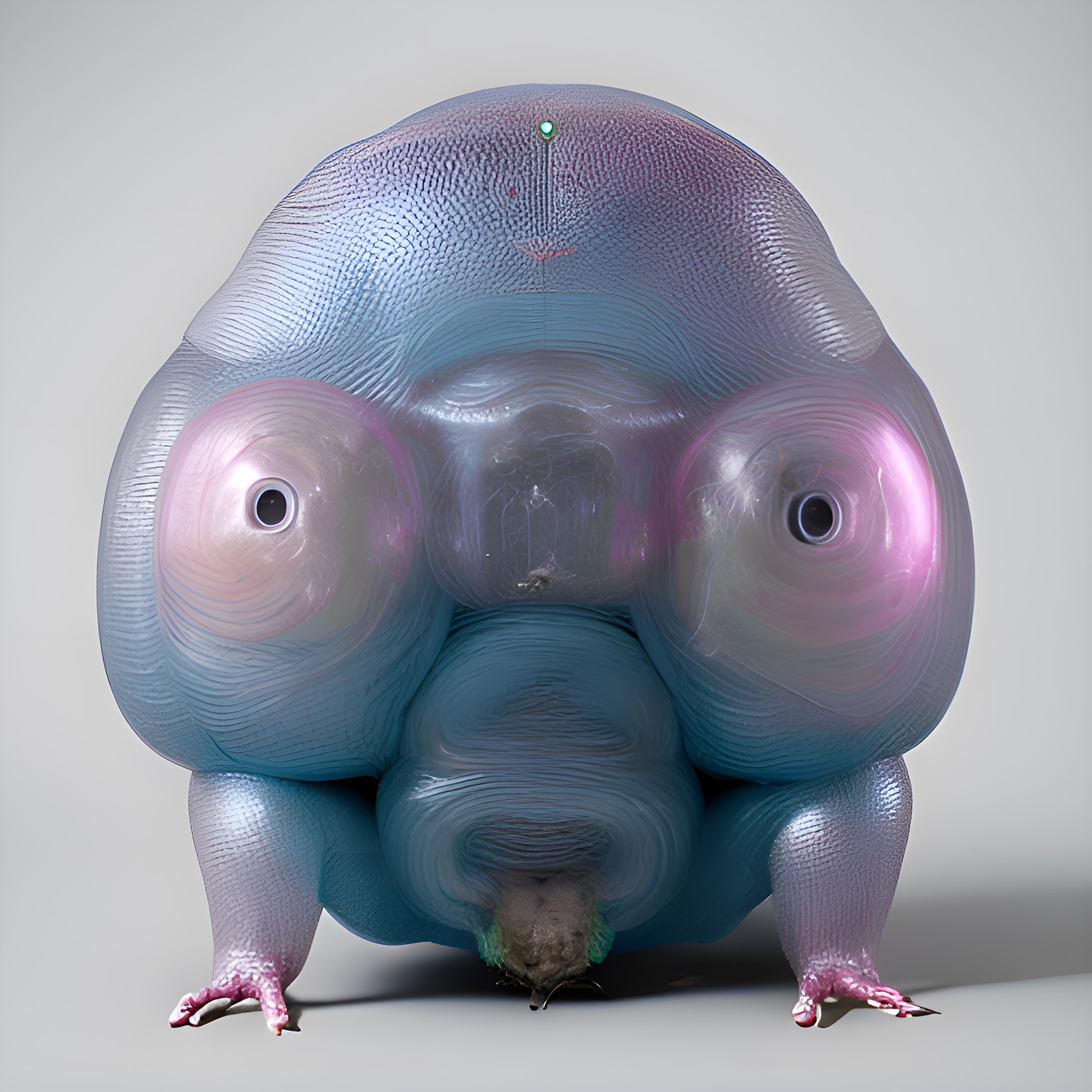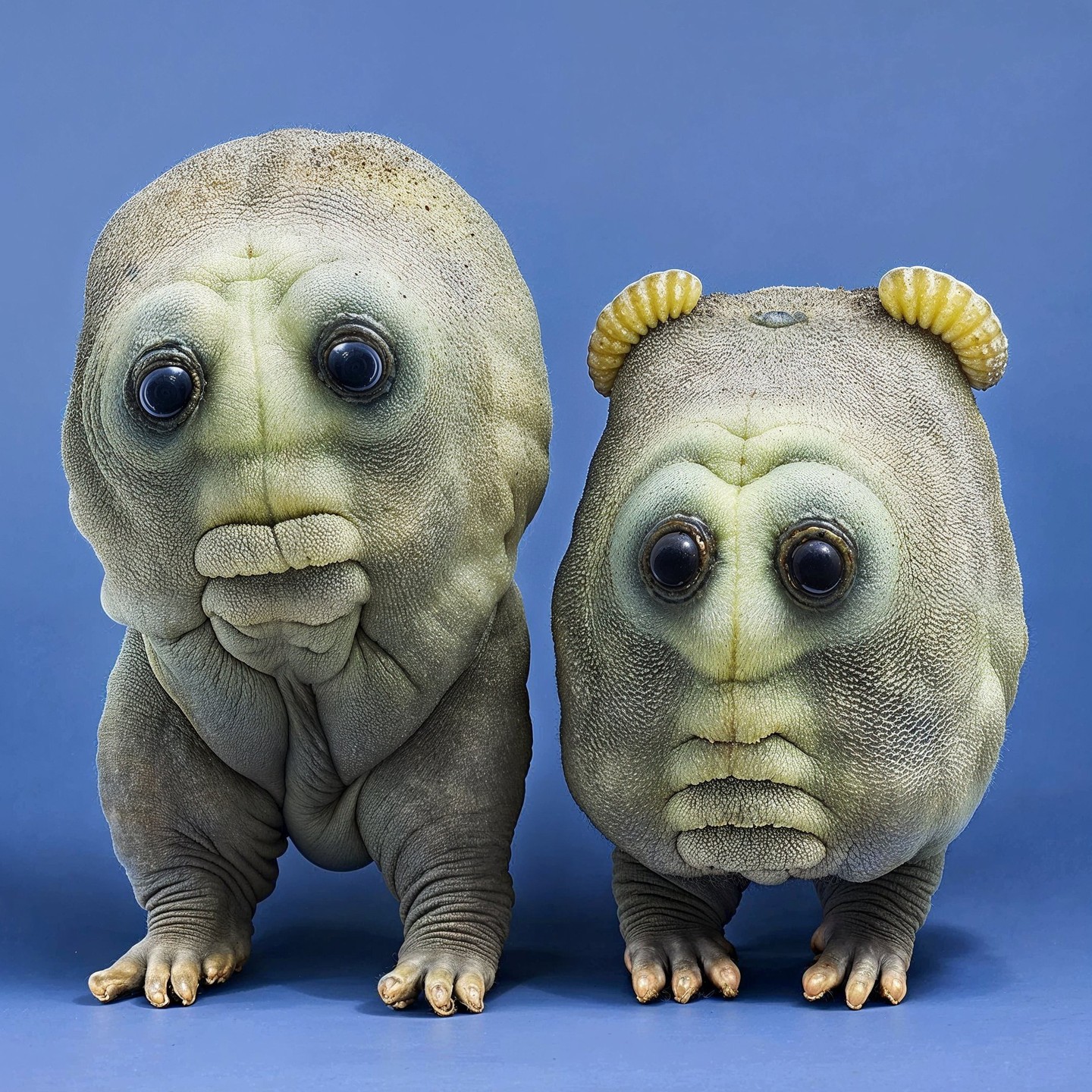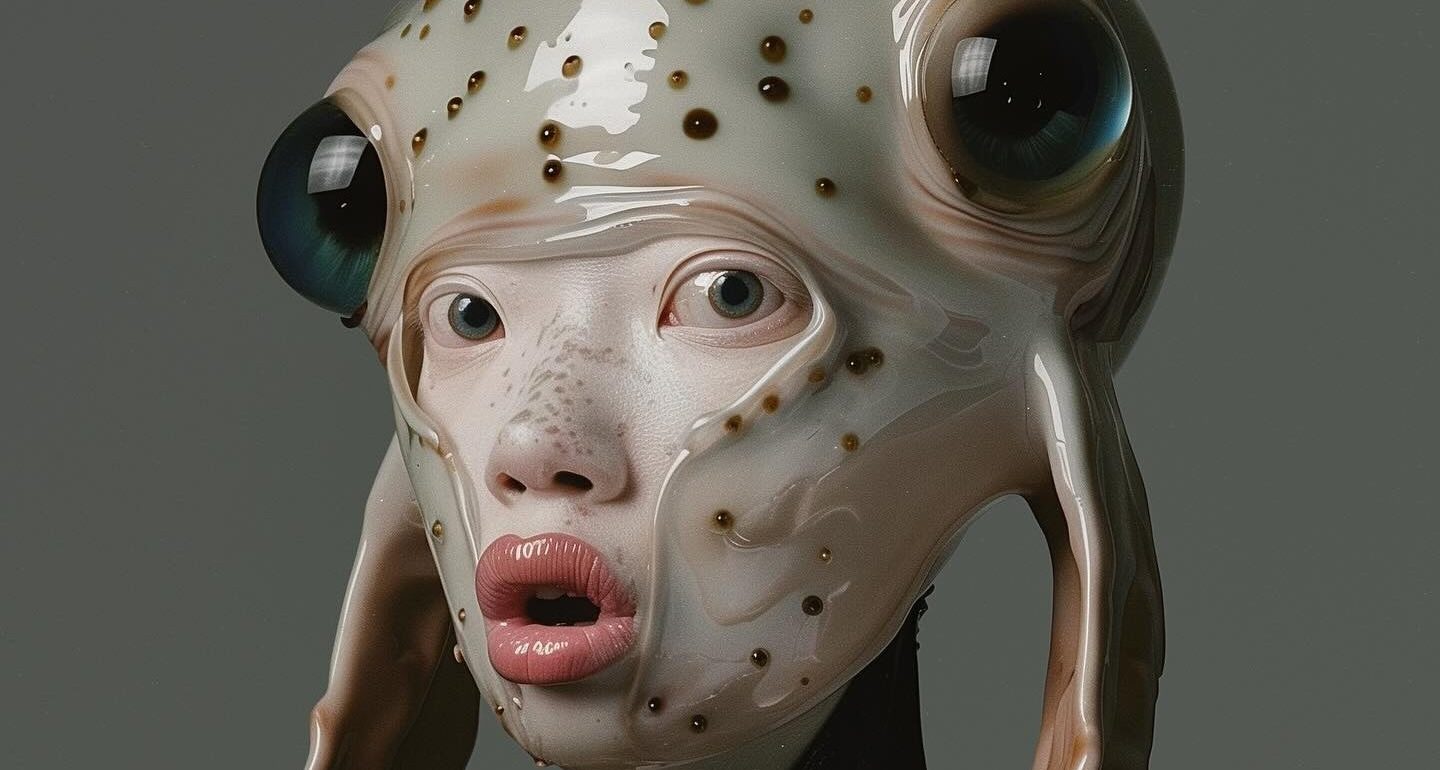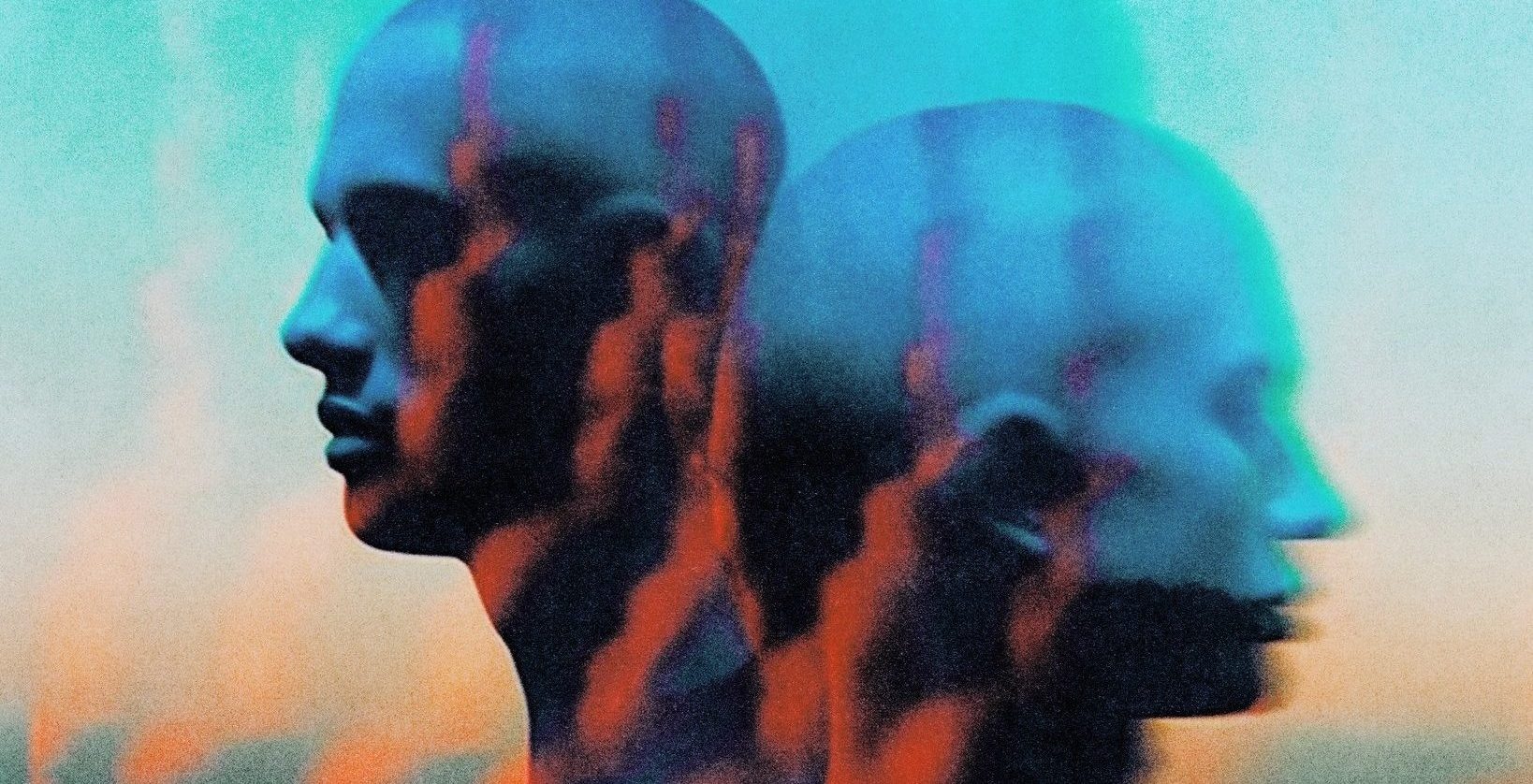Tell us about your creative (and scientific?) background.
I studied visual communication with a focus on photography and have been working artistically with the media of photography and video ever since.
So I am not a zoologist, my scientific knowledge is based on animal documentaries, lexicons and the historical texts of explorers.
What inspired you to create this project?
The project started out of coincidence, dissatisfaction and curiosity.
I was working with AI as part of my artistic work, but was initially very frustrated with the results because I couldn’t achieve what I had imagined.
One evening I sat in front of the computer and tried a prompt with tardigrades to see what would come out. One of the generated images was the first Tardi, and I found it somehow funny and likable. So, I continued with it.
Since the beginning, however, ideas that I had for years have flowed in, and I am now able to visualize them.
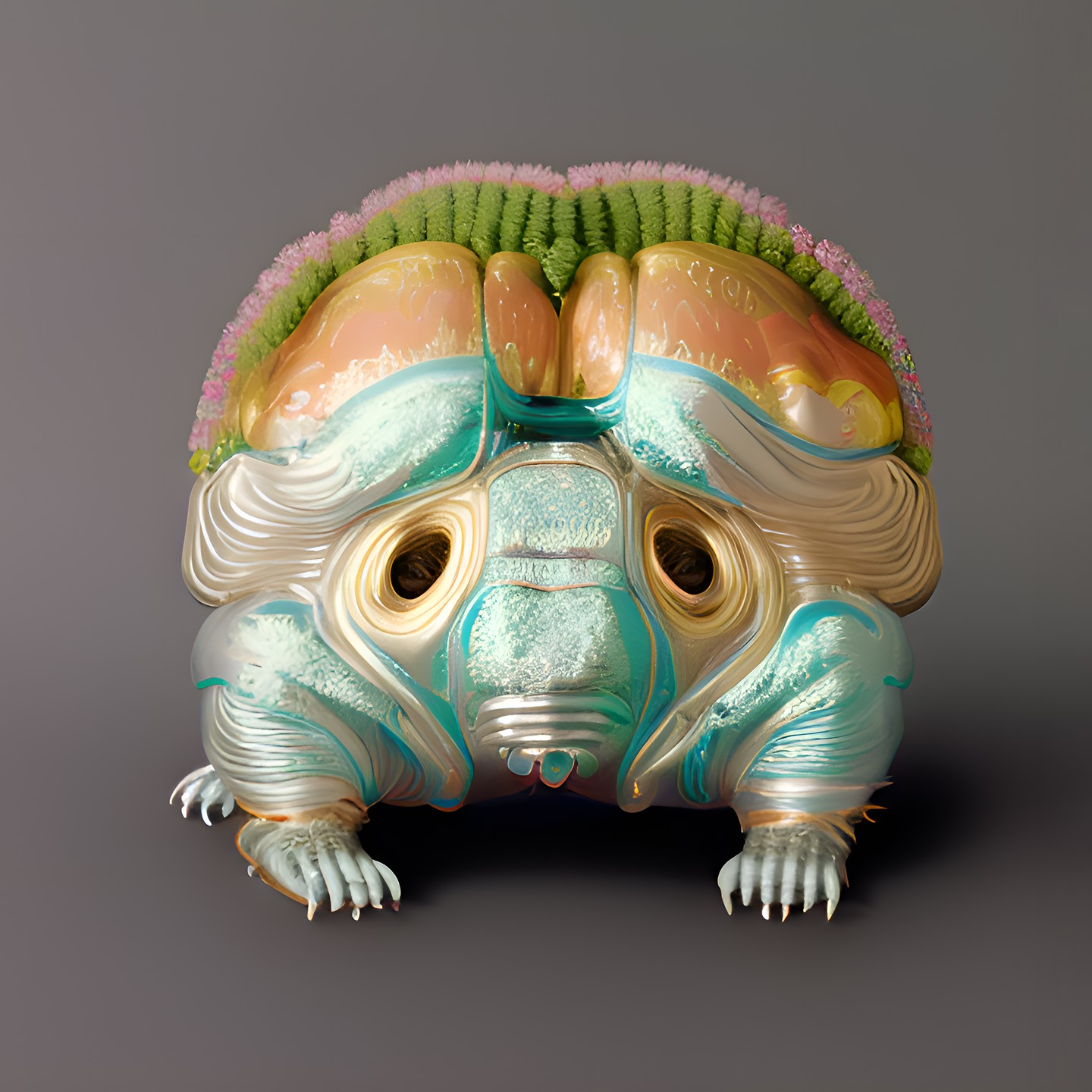
What AI tools do you use for image generation, video production, and storytelling within the project?
- Stable diffusion model 2.1 and SDXL for image generation.
- Magnific for enlarging and minor creative changes.
- Runway for animation, occasionally for the lipsync of characters.
- Heygen for lipsync.
- Stable Audio for sound effects (recently more free sound effects from pixabay).
- ChatGPT for basic information.
- DeepL for translation.
Can you walk us through how you use them?
To create the Tardis I am using Stable Diffusion model 2.1, then run them through Magnific and for some corrections through Photoshop, then Runway for animations, sometimes with the brush, sometimes let it add motion randomly.
For the images of the Humanoid Friendly Machine Race (HFMR) or the zoologists, I also generate images with the 2.1 model first and then use these images as a reference for the generation with the SDXL model.
Depending on the images, I then let the text fall into place, which I write in German and have it translated by DeepL. Every now and then I ask ChatGPT something about certain characteristics in the animal kingdom, or have it write texts about the members of the SIZ based on certain specifications.
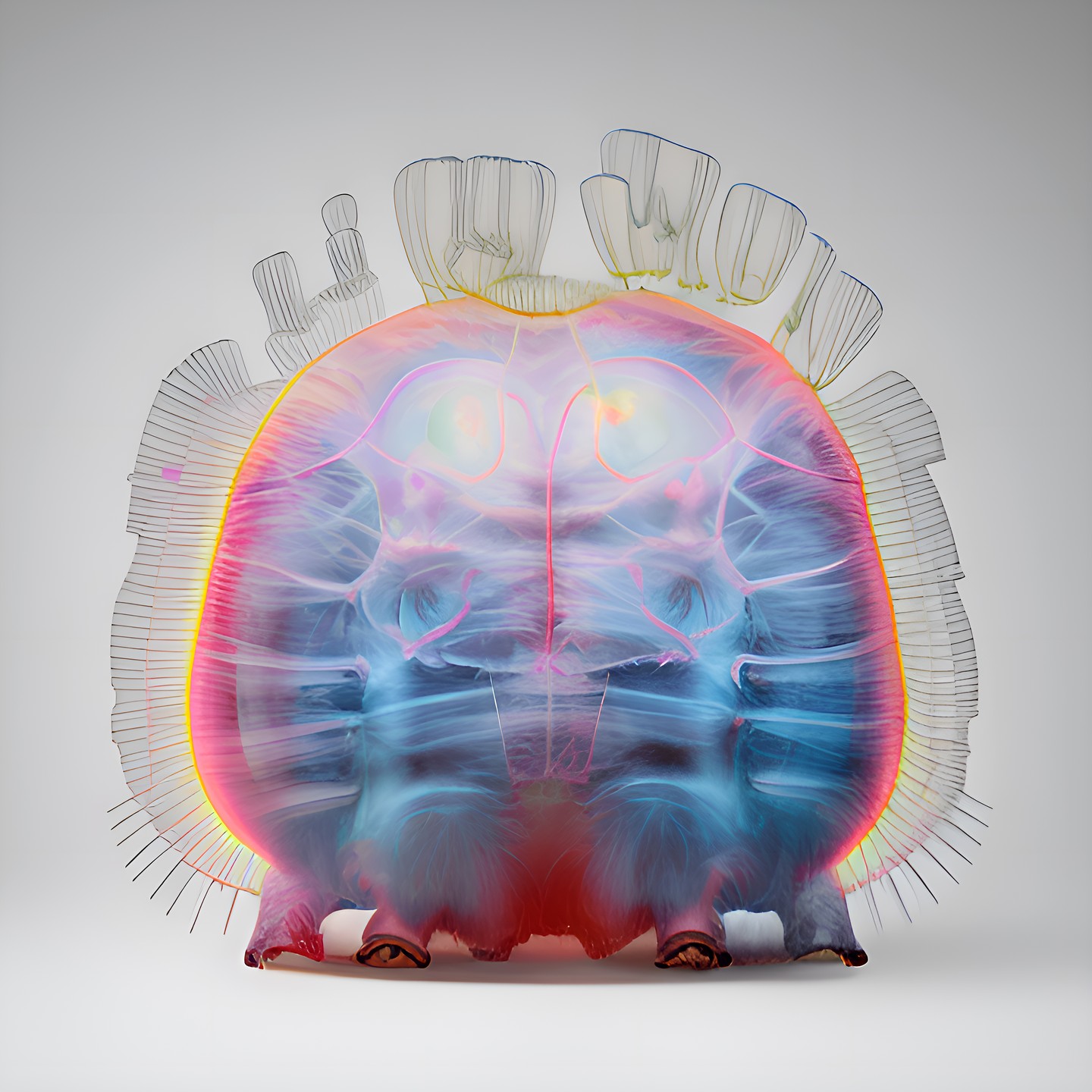
Who is John Conrad Ephraim? Tell us more about the main zoologist in Tardi.
The name is made up of the presumed discoverers of the Tardigrade, Johann August Ephraim Goetze and Johann Conrad Eichhorn. Two German zoologists who independently discovered the animals and published their findings in 1773 and 1775 respectively.
John Conrad Ephraim is of course very distantly related to both of them and continues the family tradition of zoology. He is a member of the Society of Interstellar Zoologists and an adventurer who ventures into the uncharted territories of the universe.
He often travels with the space truckers as they also have to fly to very remote places. But he also enjoys traveling alone with his spaceship.
He is 223 years old, enjoys playing Way Sek (a strategy board game), likes laser grill fast food dishes and has had an artificial hip joint at the age of 78.
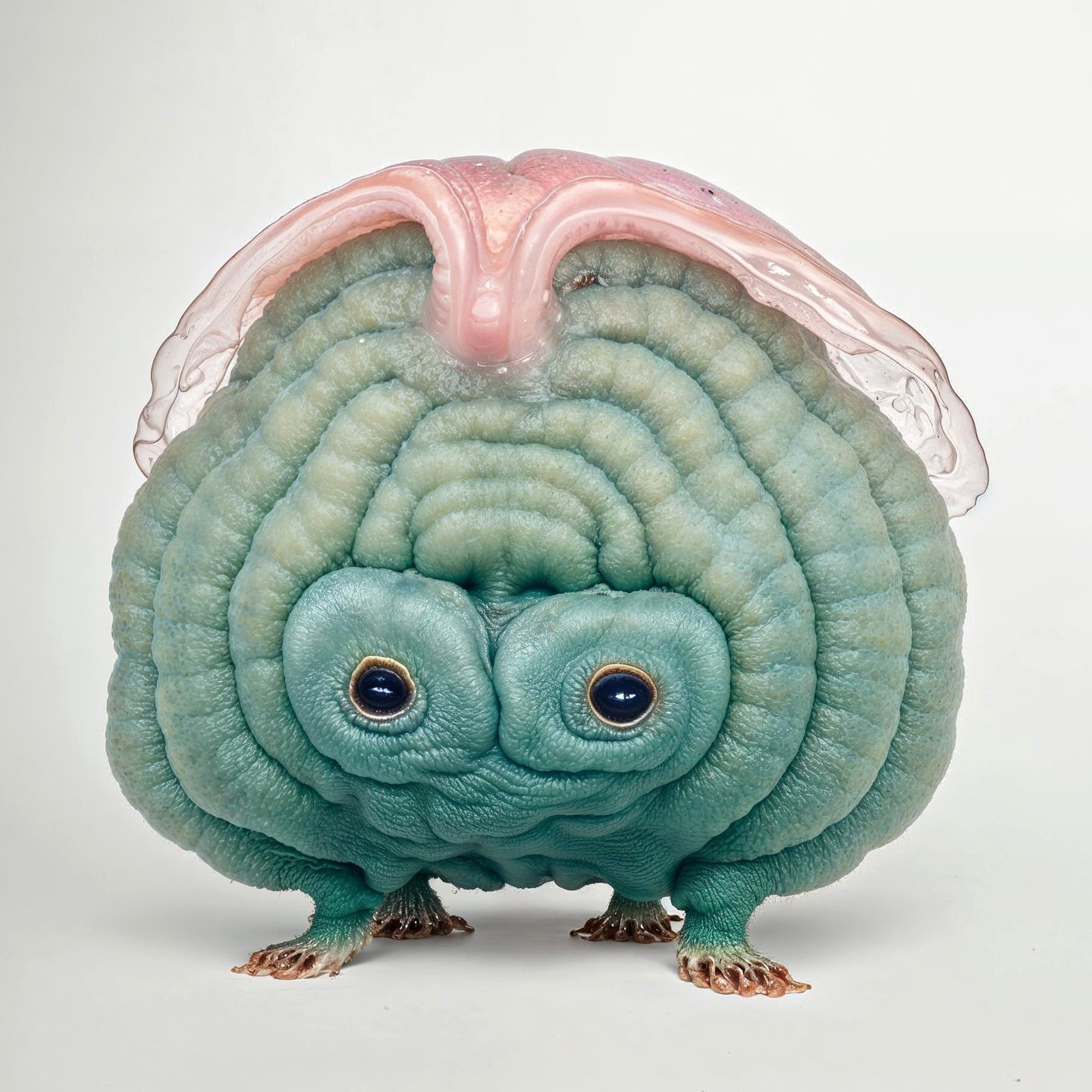
The animals in your project have a registration number, up to 4536. Does this mean the project will conclude once you reach this number? What are your future plans for the ‘Life forms of Tardi‘?
The number 4536 stands for the current research project, so there have been 4535 other research projects before, but most of them were not as elaborate as the project on Tardi. The final number of Tardis is roughly based on the number of species that presumably exist on Earth. This means that the project will come to an end in the not too distant future.
I want to finish the project with a documentary that gives more insight into the planet, the animals and also the research.
After that I would like to expand the universe further: with a project in which I visualise the research results of the HFMR, a new planet for John Conrad Ephraim and more from the HFMR, SIZ and the Space Truckers.
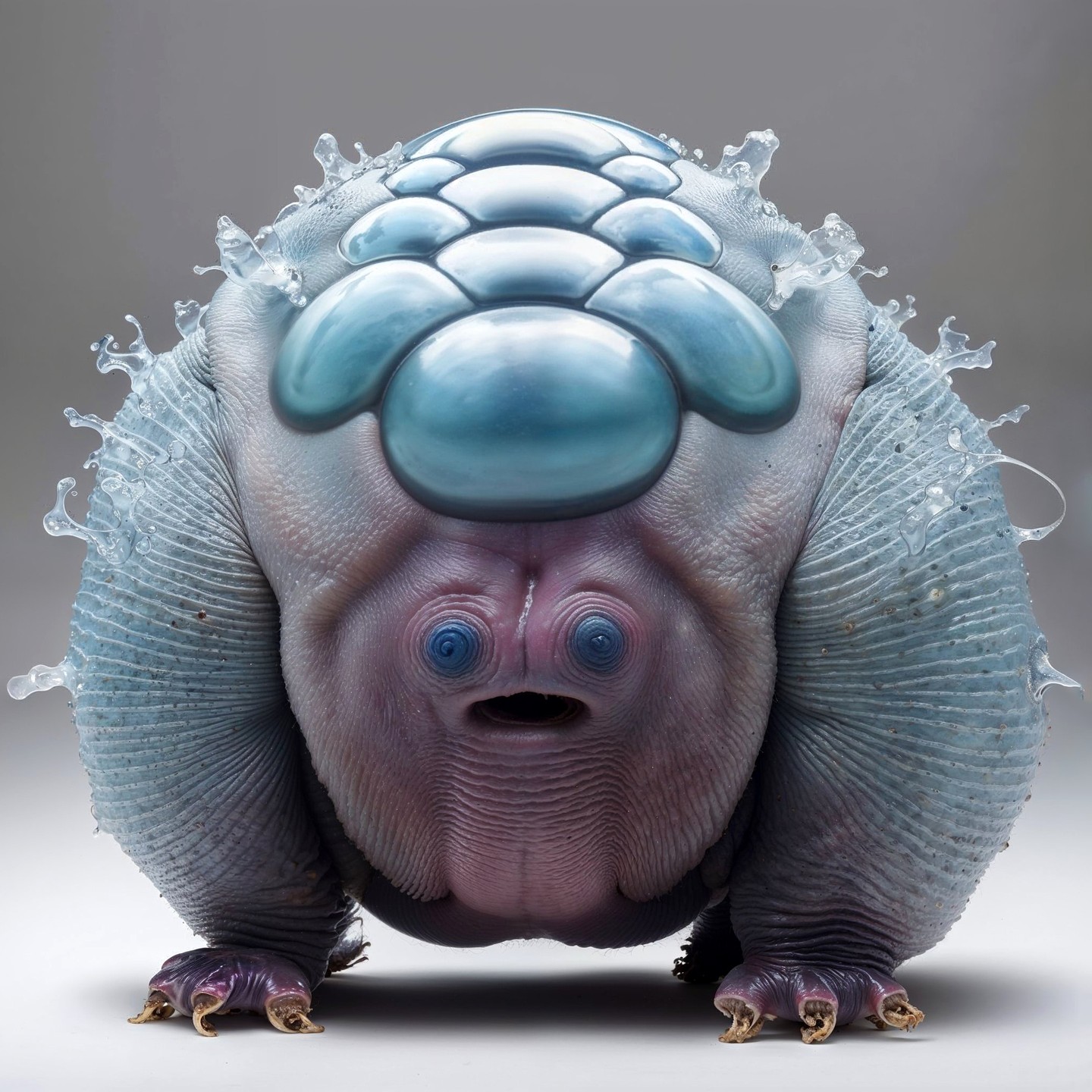
Has the AI ever generated something that surprised you and shifted the direction of the project in a way you didn’t expect?
Some characters of the SIZ or the Space Truckers are created by the same prompt as the Tardis and also some of the quite popular posts, like the little Tardi sitting on a finger.
How do you manage the commitment that such demanding artistic projects require?
I work a regular job in the art industry, as soon as I get home I spend time with my family and have about 2-3 hours in the evenings or weekends to work on the project.
I try to be as efficient as possible, but even short videos take a lot of time with animation and sound effects. I wish I had more time to take care of this in the near future.
Do you feel like an explorer when you work with AI?
I find it extremely exciting to work with it, precisely because of its unpredictability and rapid development.
In fact, I feel more like an explorer when I explore the community and find new creators and interesting works.
What does AI represent to you in the creative process? Do you view it as a tool, or as a co-creator, or is it something else?
For me it’s a liberation that I’ve been waiting for about 15 years, I’ve always wanted to build a whole universe but was too lazy to learn the programs for it.
Now I actually use AI in a similar way to Photoshop in my artistic work, and it’s very repetitive. I press the same button hundreds of times a day.
Since December I have generated about 25k images, most of them Tardis. My job is to filter out what I want to publish from all that. So maybe I’m more like a curator.
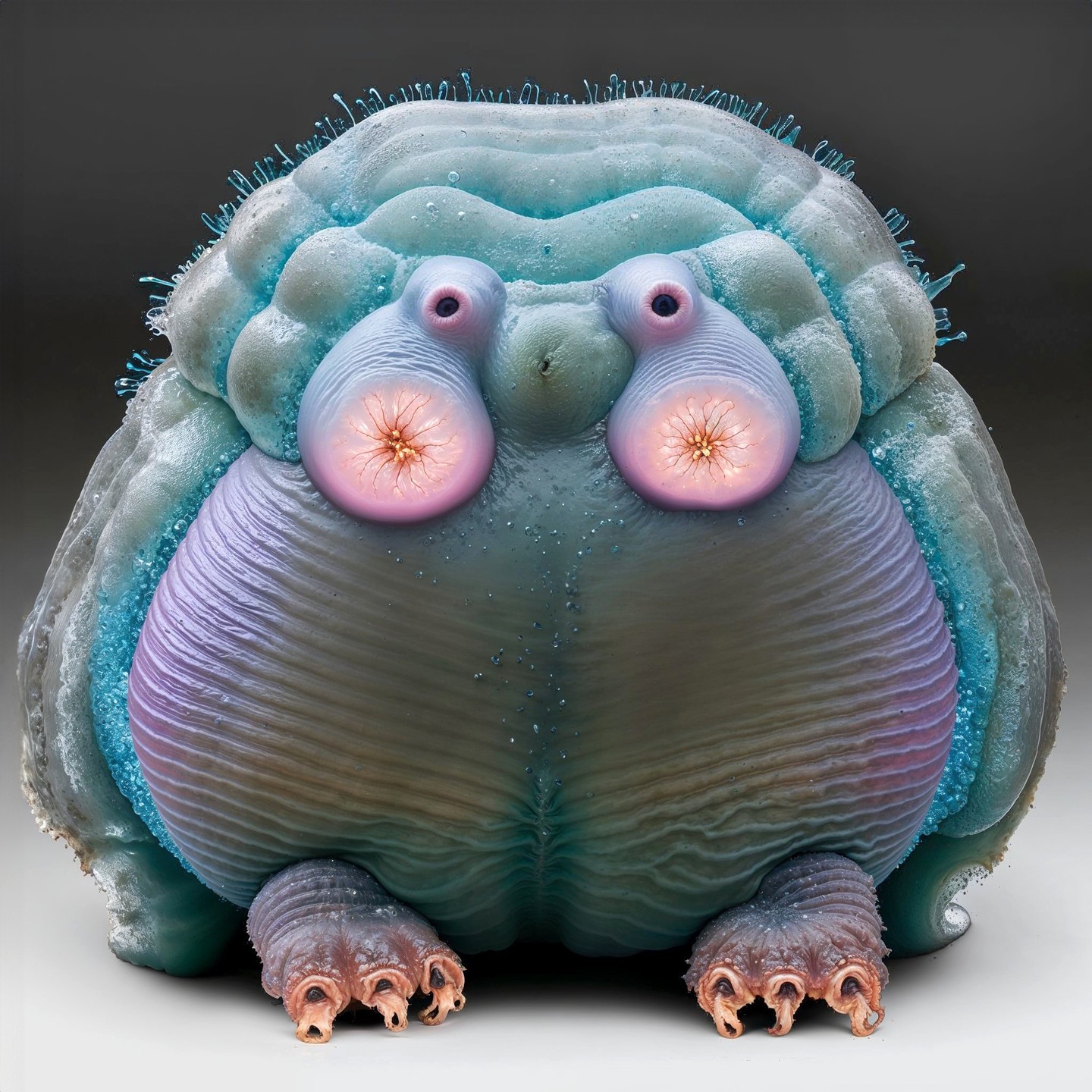
The Humanoid Friendly Machine Race (HFMR) is a symbol of advanced AI living in harmony with other life forms. Is this indicative of how you envision the future relationship between humans and AI?
I would be very happy about this and I think it will happen. We already live under the same roof as robots that do simple tasks for us. This will certainly increase in the future and the robots will take on more human forms.
Do you believe creativity is an inherently human trait, or can AI possess creativity in its own right?
I think that some people are creative and
the more similar AI becomes to us, the more creative it will become
but maybe not every AI, only those who use it, as with humans.
Very interesting question, which I could actually research in a project, the creativity of non-human life forms. Thanks for the idea.
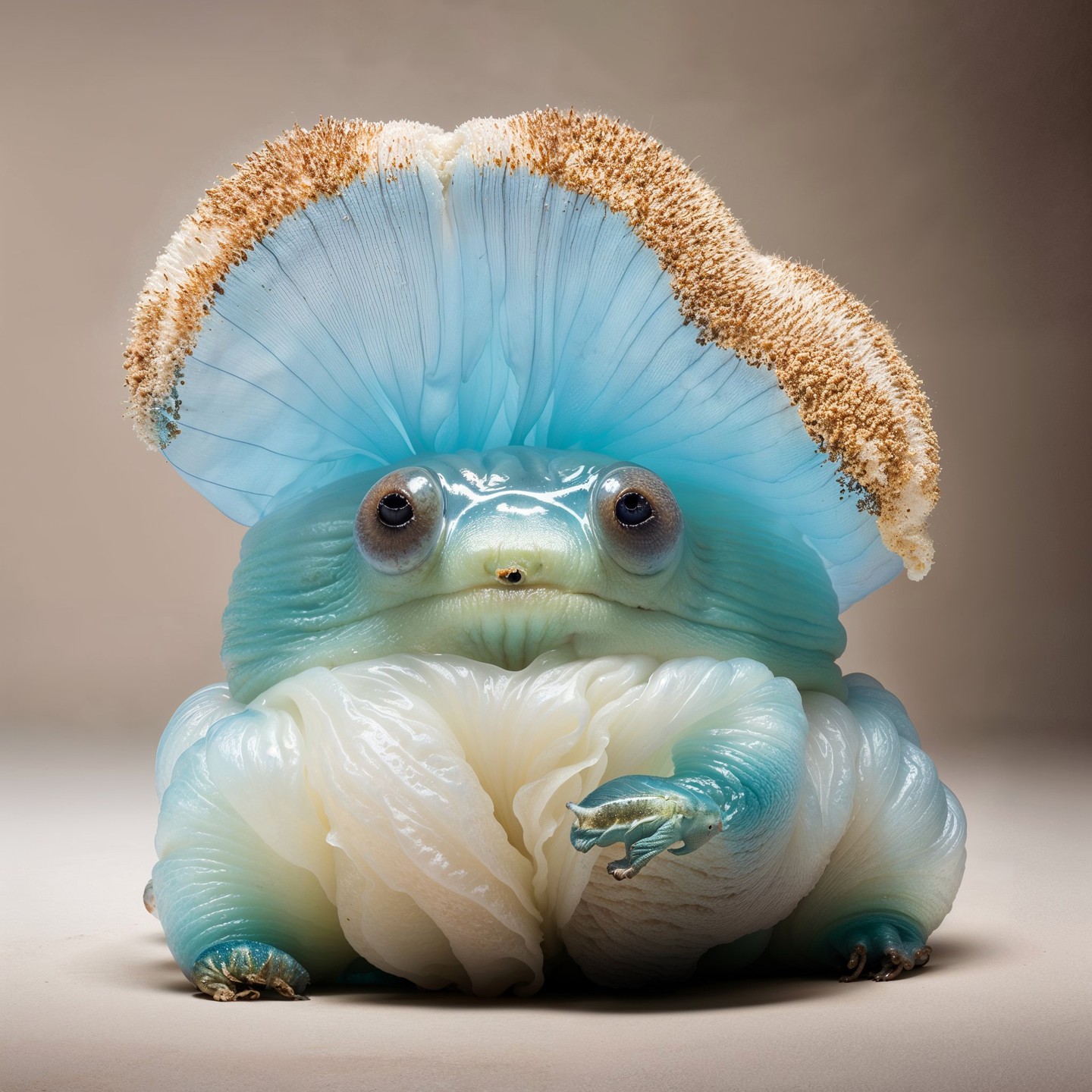
What are your thoughts on the current and future potential of AI for world-building?
I’ve always been fascinated by worlds like Lord of the Rings, Star Wars, Toriko or One Piece.
Now a dream has come true for me and I can use AI to build a world myself. And with every step that image, video or sound generators get better, the world becomes more detailed.
And it’s great that these possibilities are open to anyone with internet access and imagination.
I would find it extremely exciting and thrilling if everyone had their own world and we could visit each other.
Maybe one day these worlds will materialize and we’ll really live there.
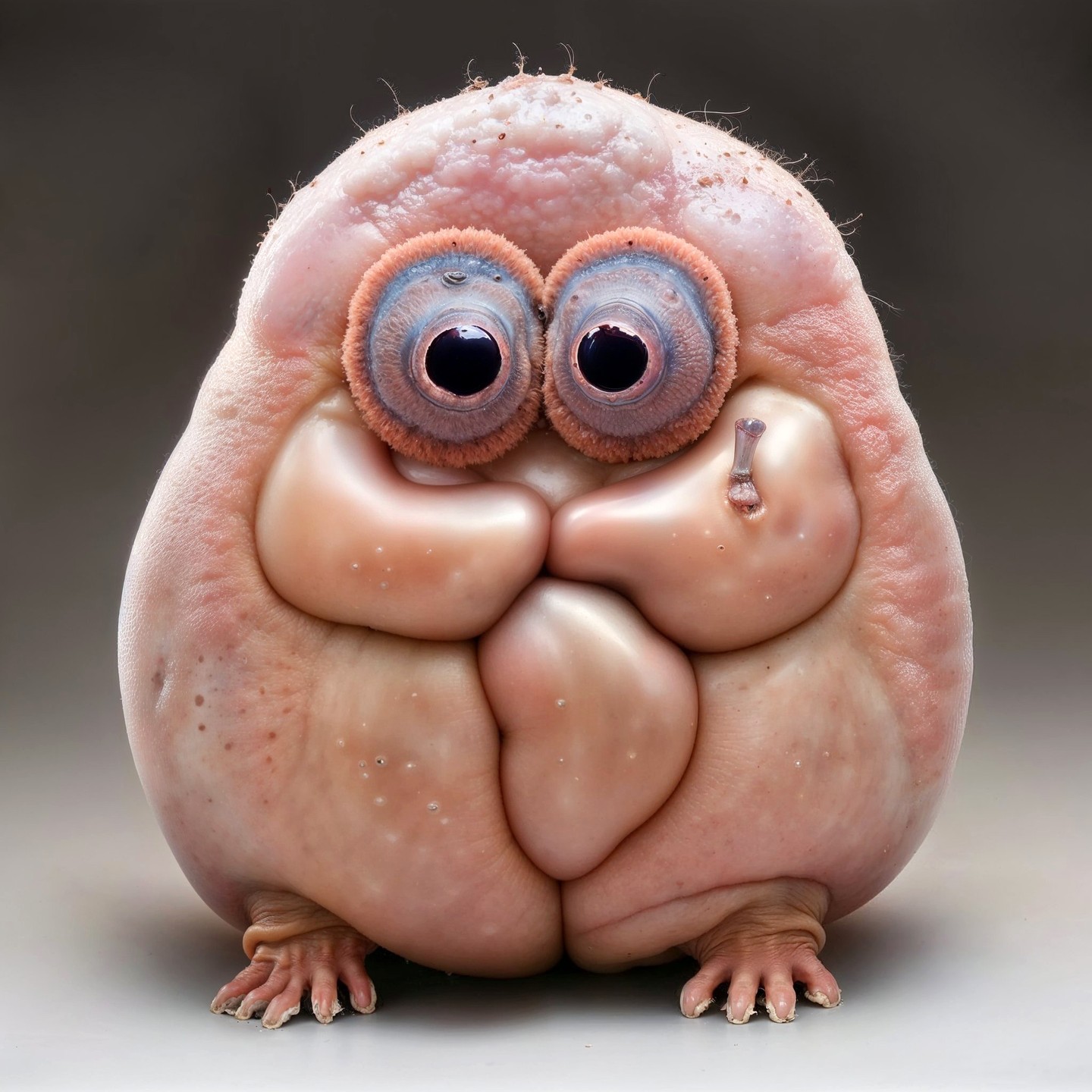
The Top 3
Top 3 words to describe your AI-generated work
Top 3 AI creatives whose work stands out to you
Top 3 improvements you wish to see in current AI tools
- Programs that generate animation, lip sync, and matching sound effects together.
- Controlling the creation process directly with the brain.
- Less restrictions.
Top 3 advice for creatives considering starting to experiment with AI
- Don’t think too much
- Be open to surprises
- Try to combine it with something analogue
Thank you, Thiemo, for sharing your visionary work and insights with us! ‘Life forms of Tardi’ is an amazing example of the opportunities that AI provides for world building projects (and many other artistic expressions).
We look forward to continuing to follow John’s adventures and discovering more incredible creatures from Tardi!
 ☰
☰
